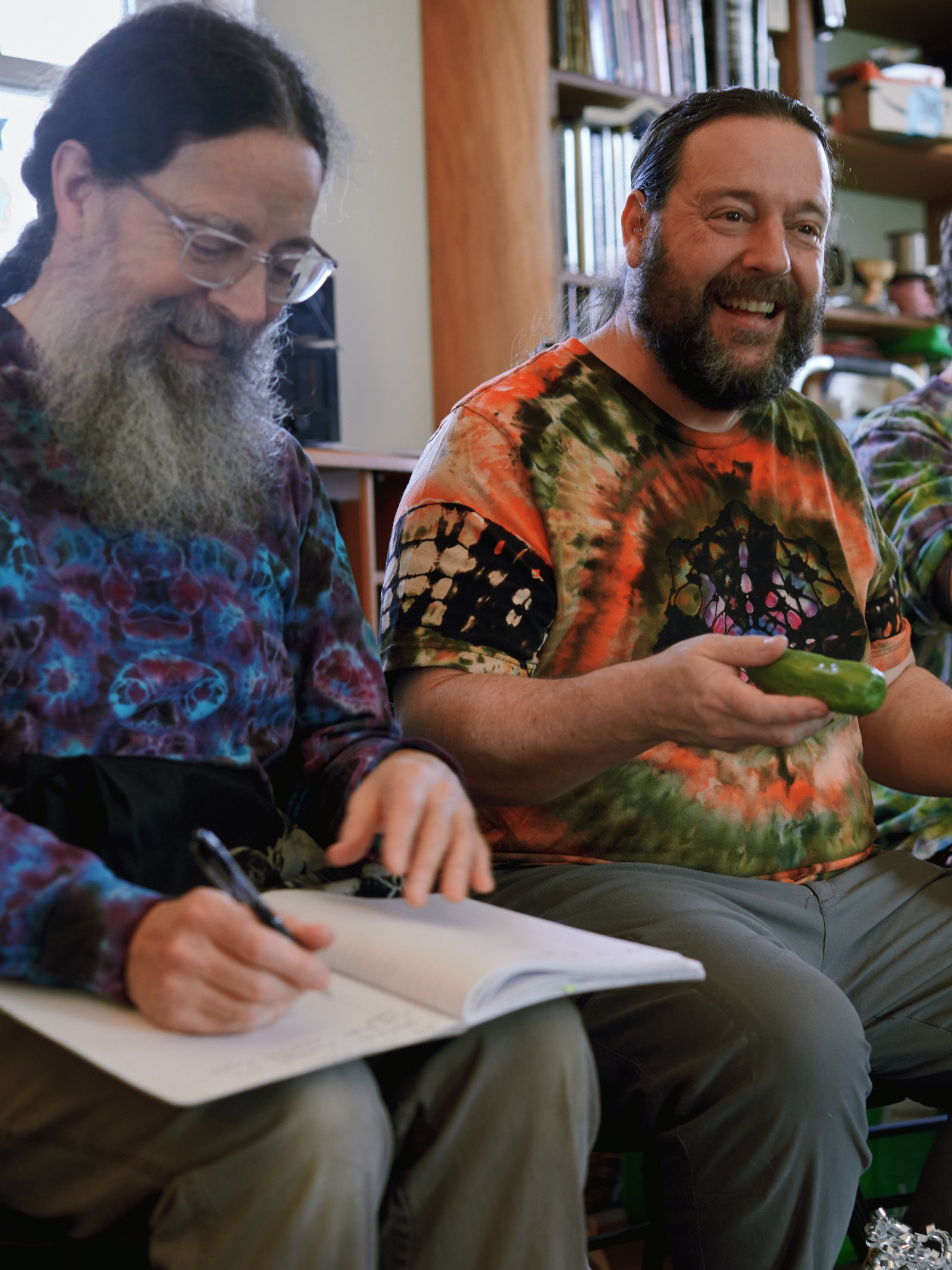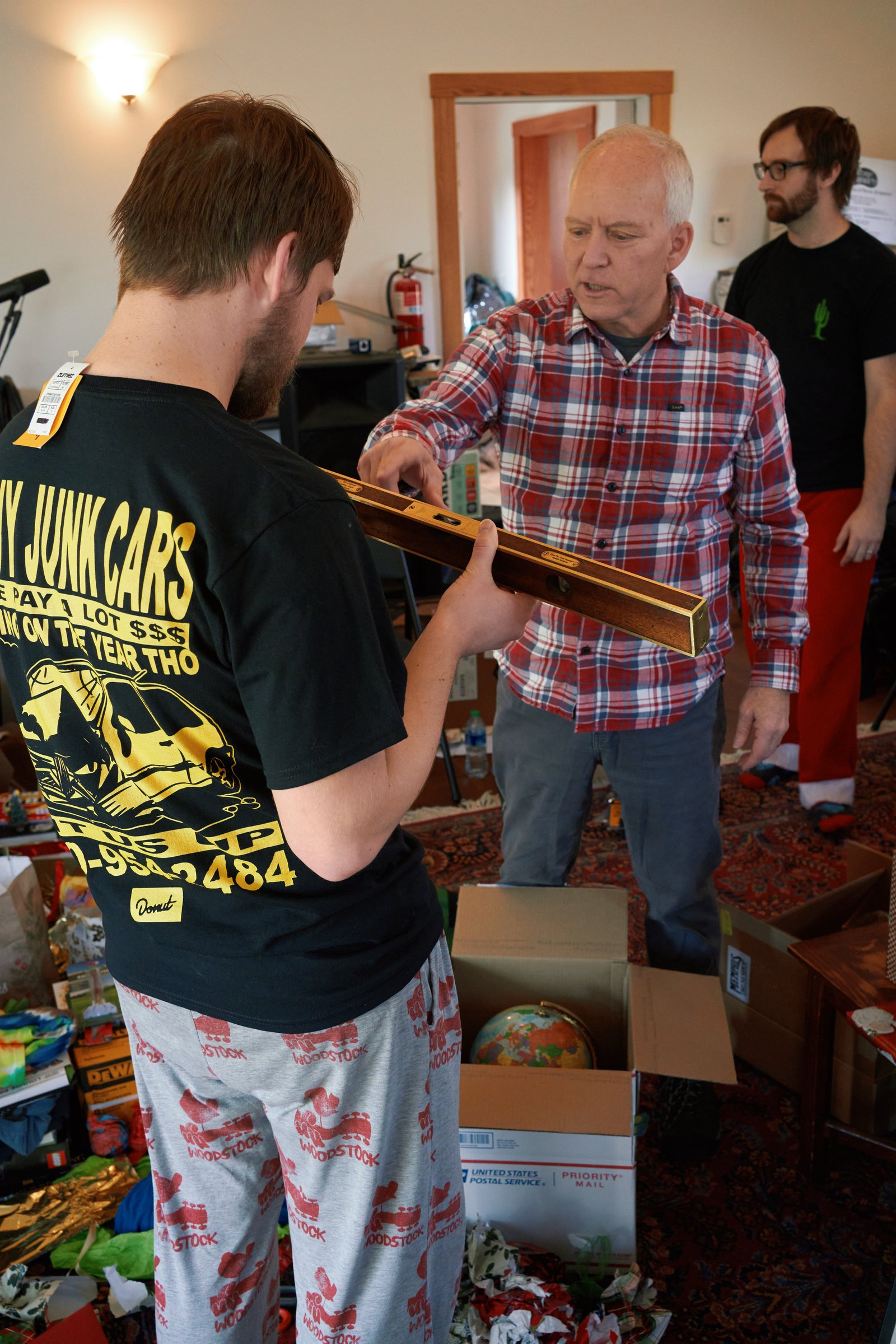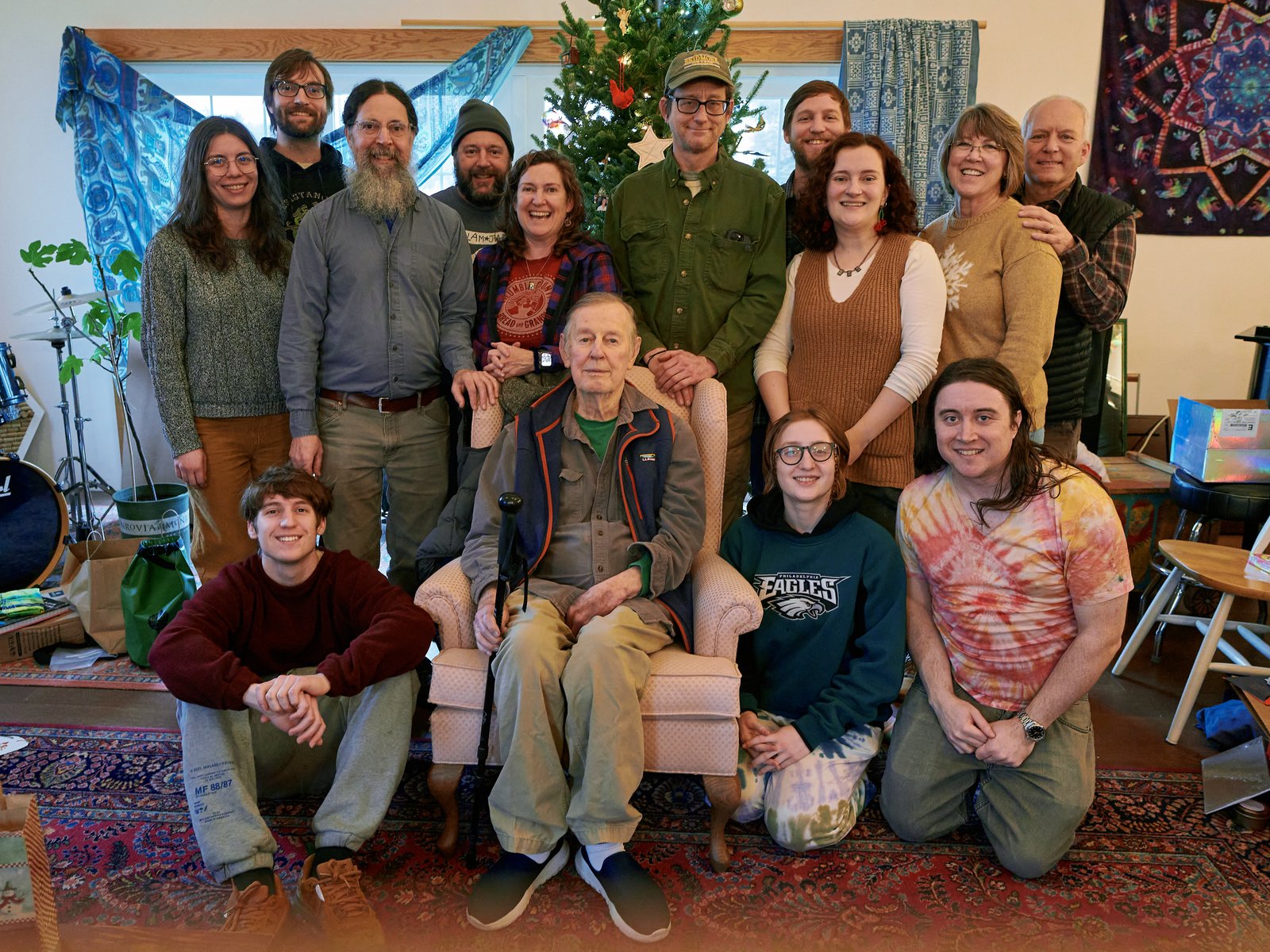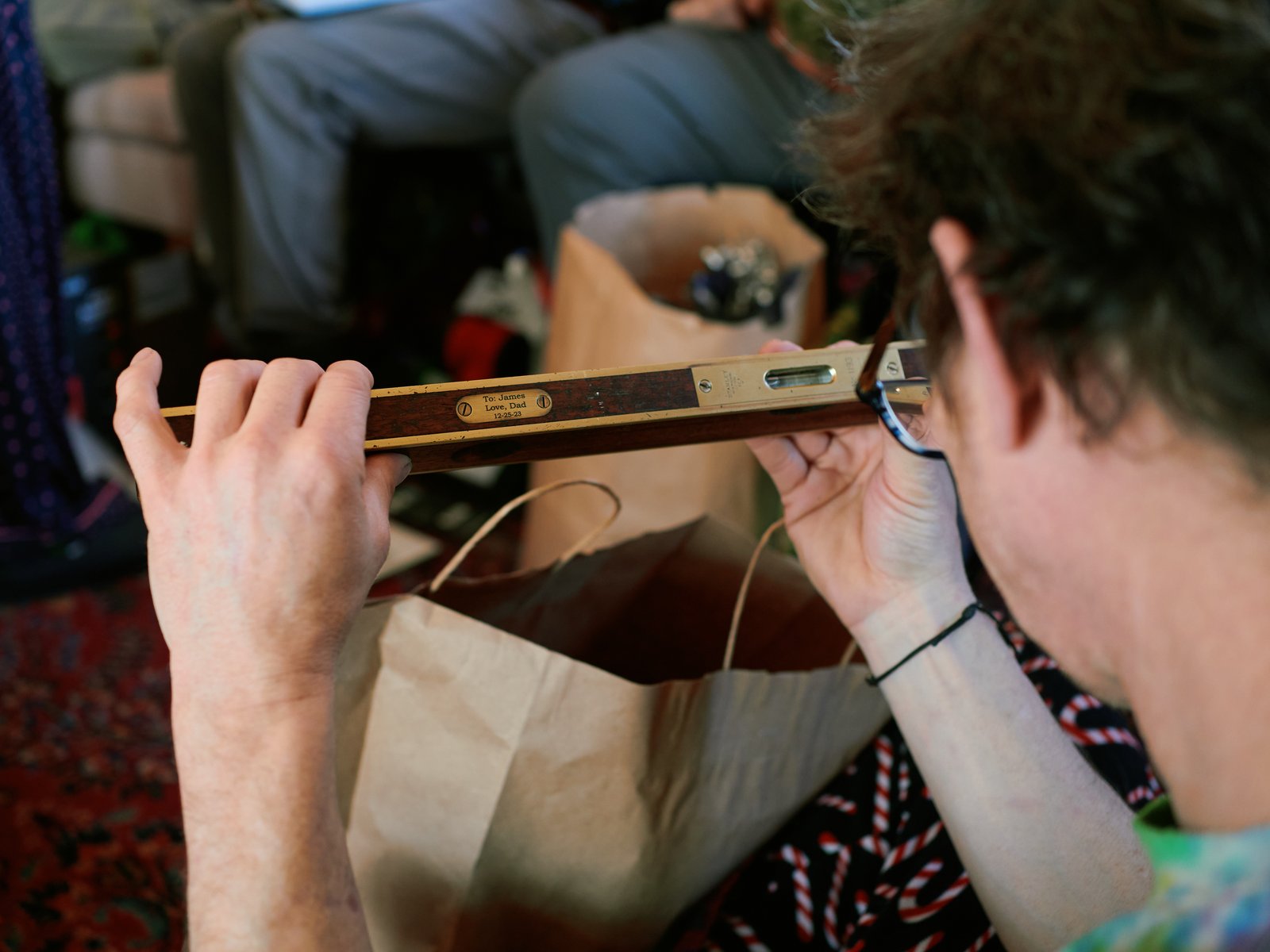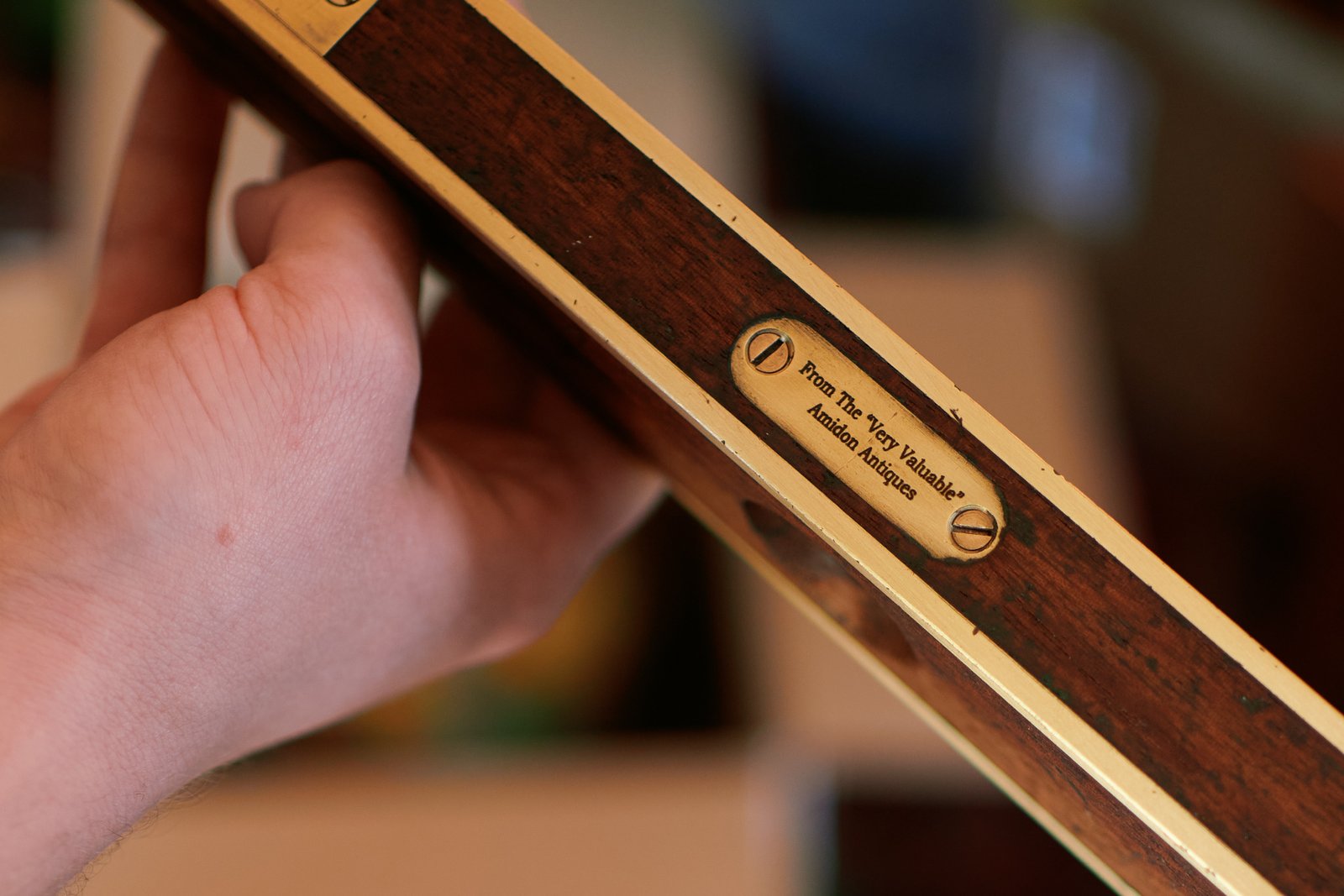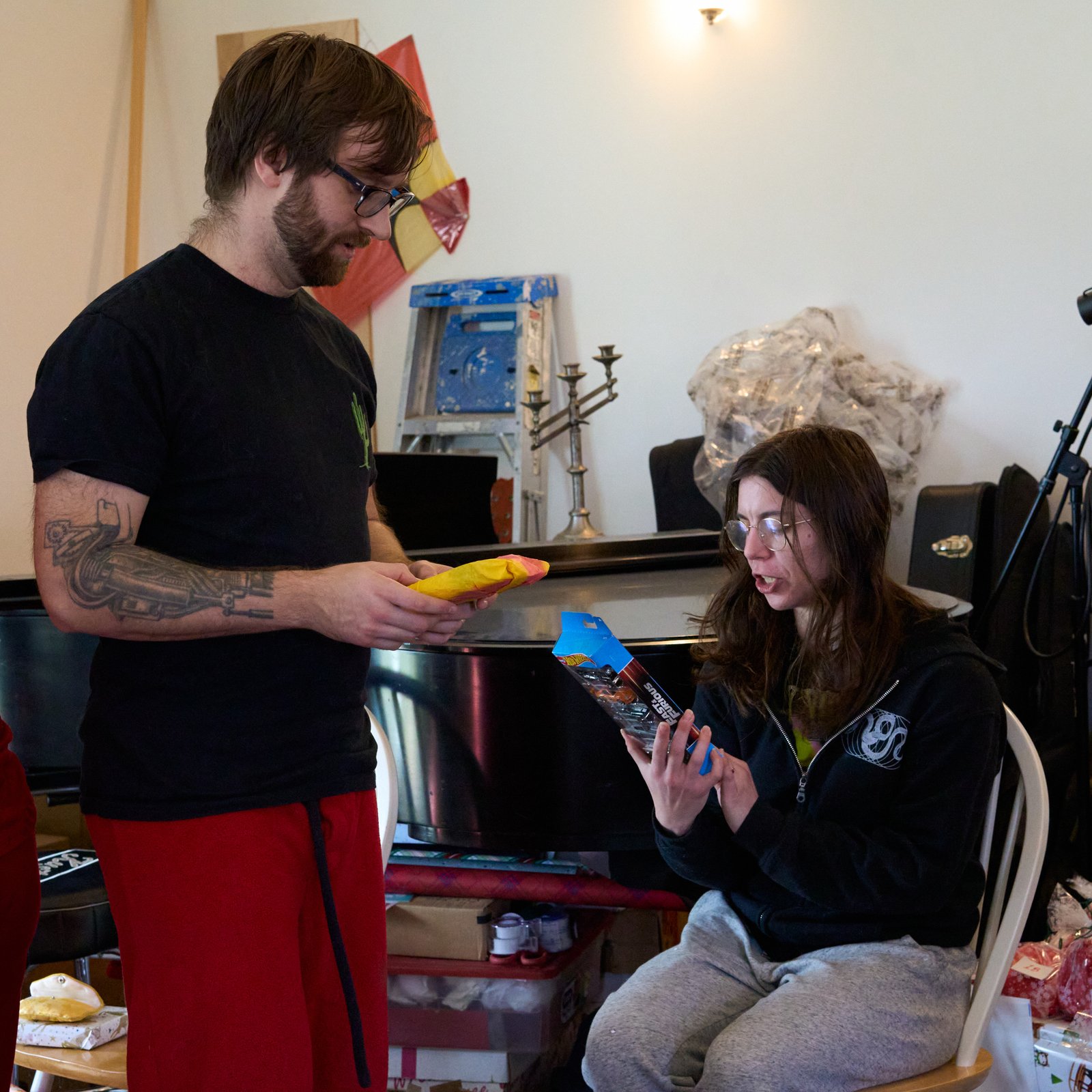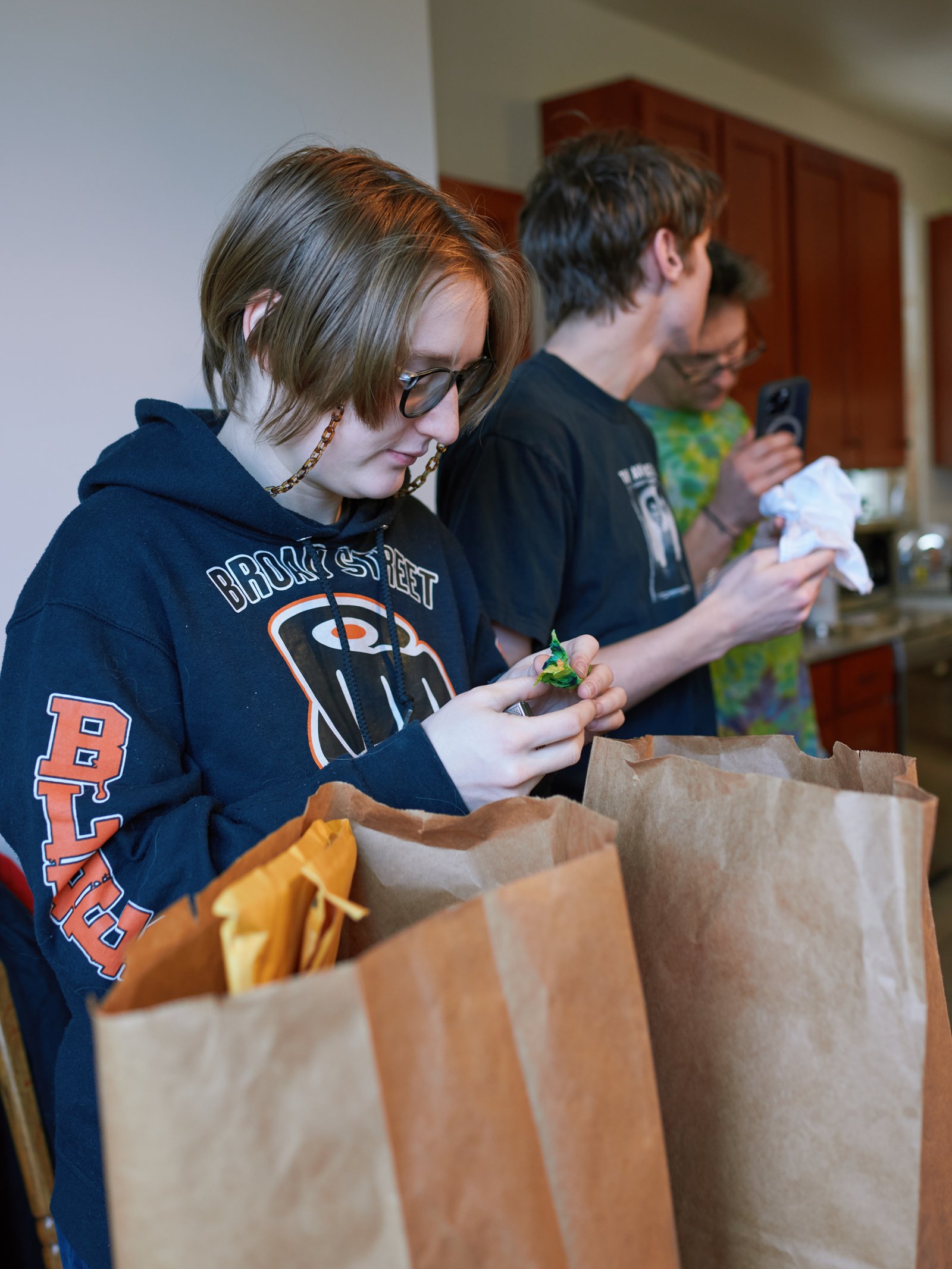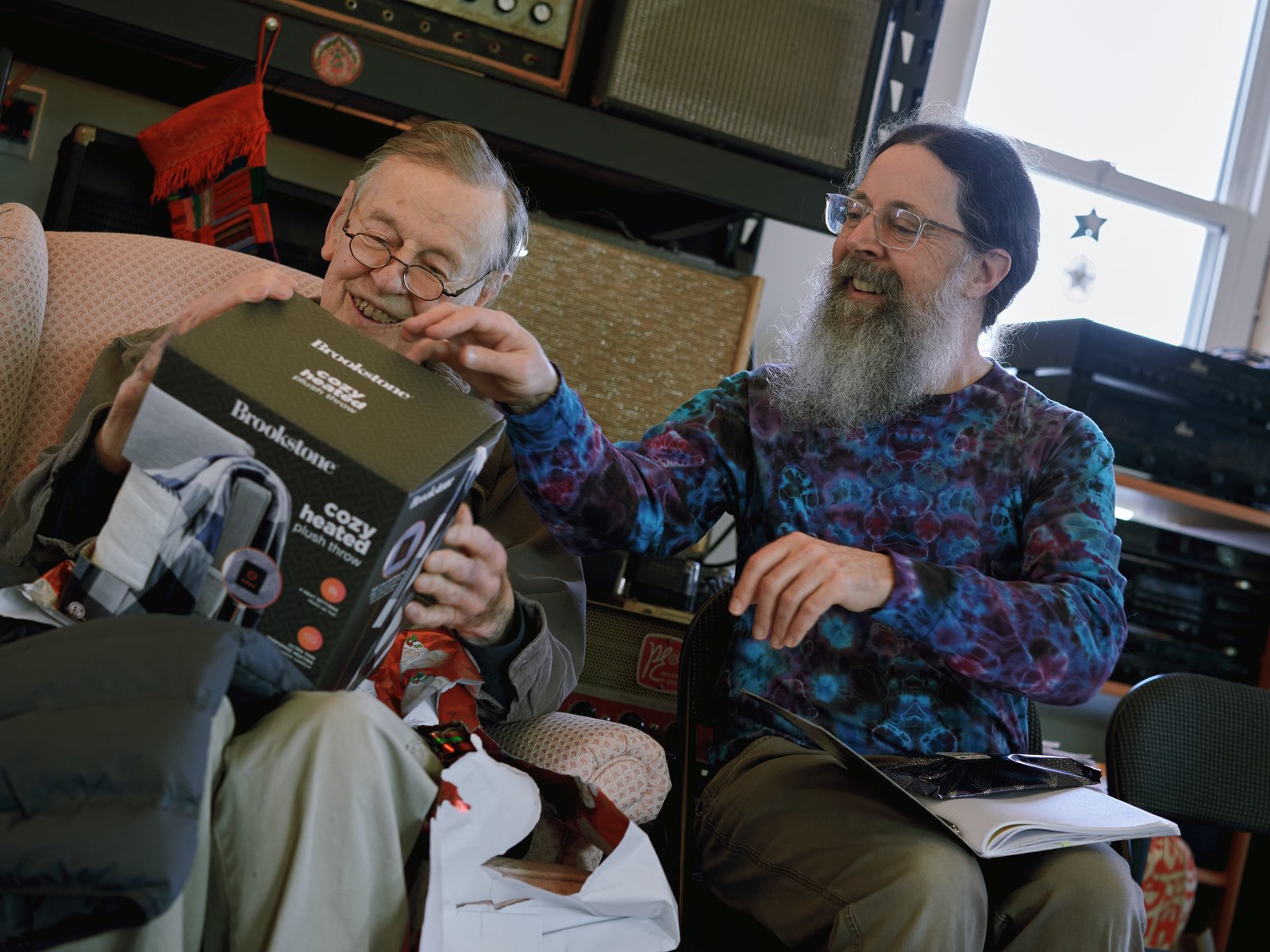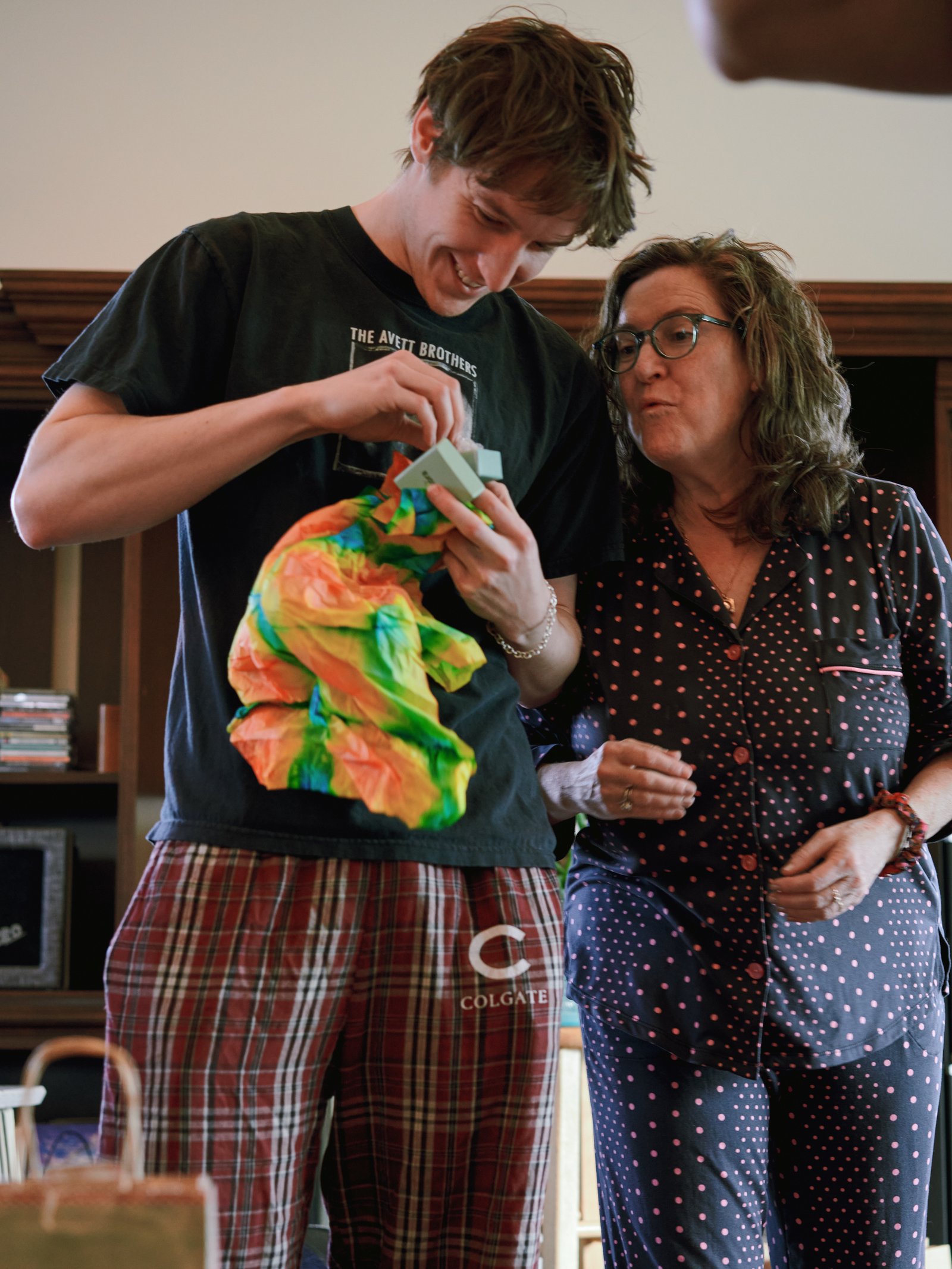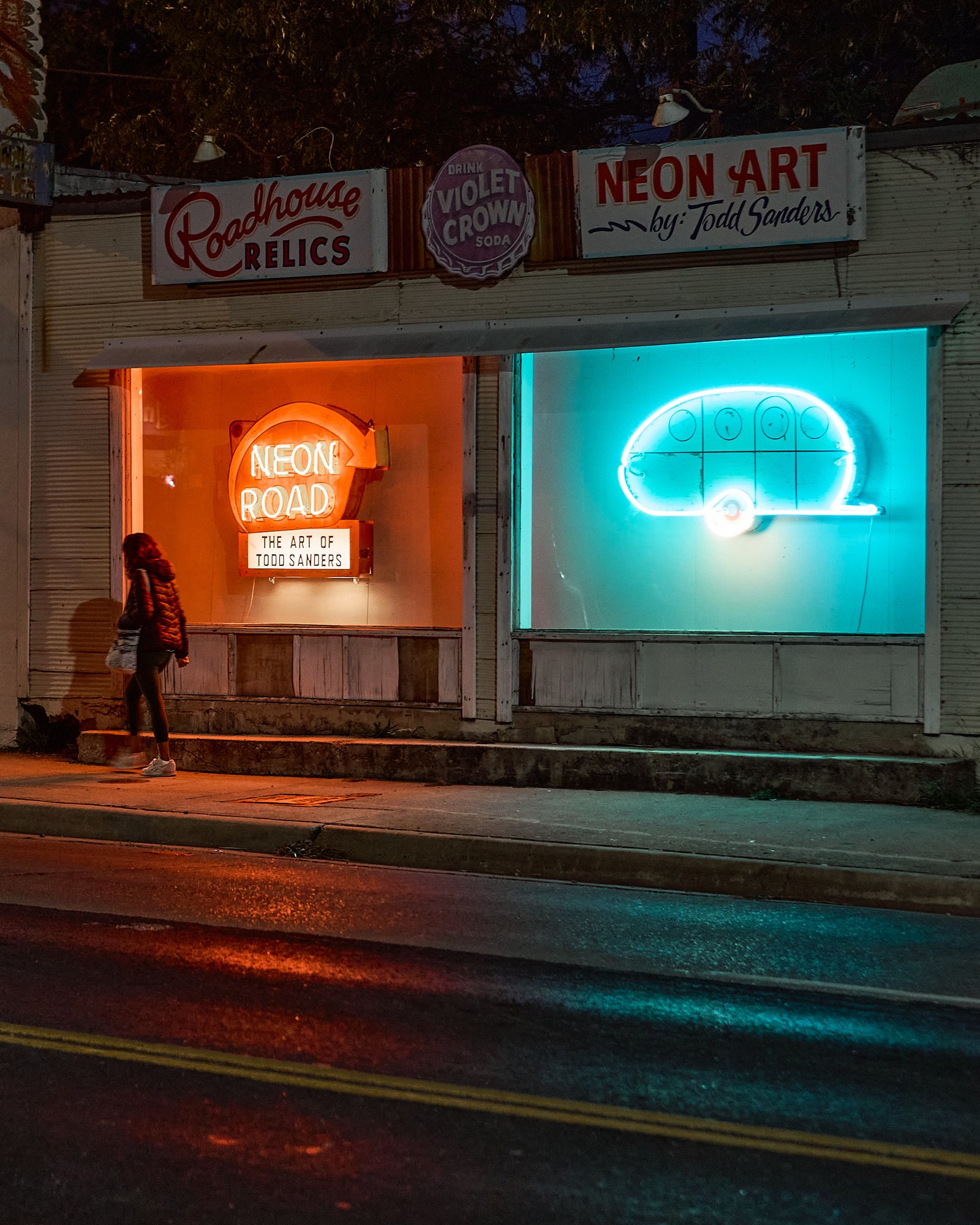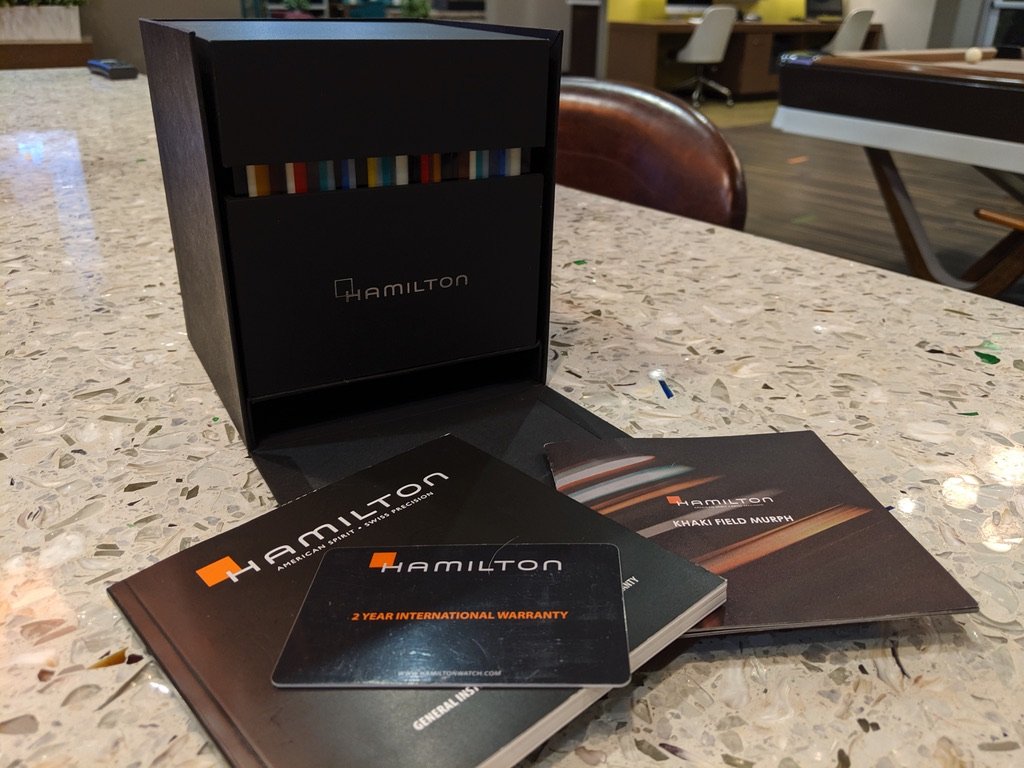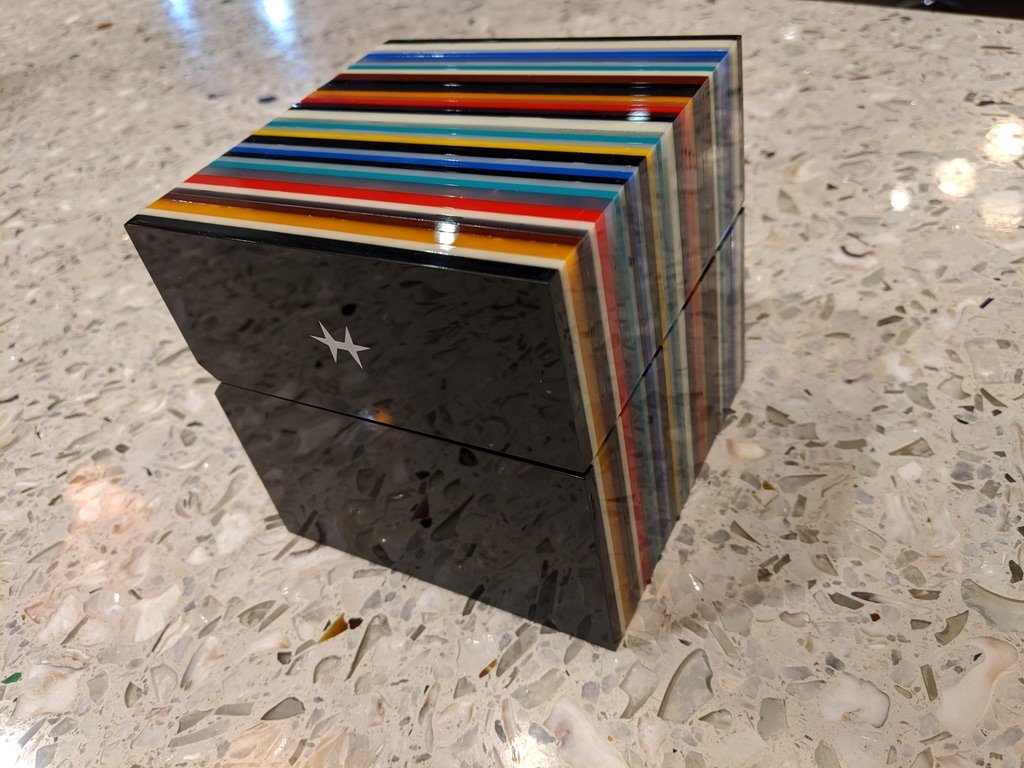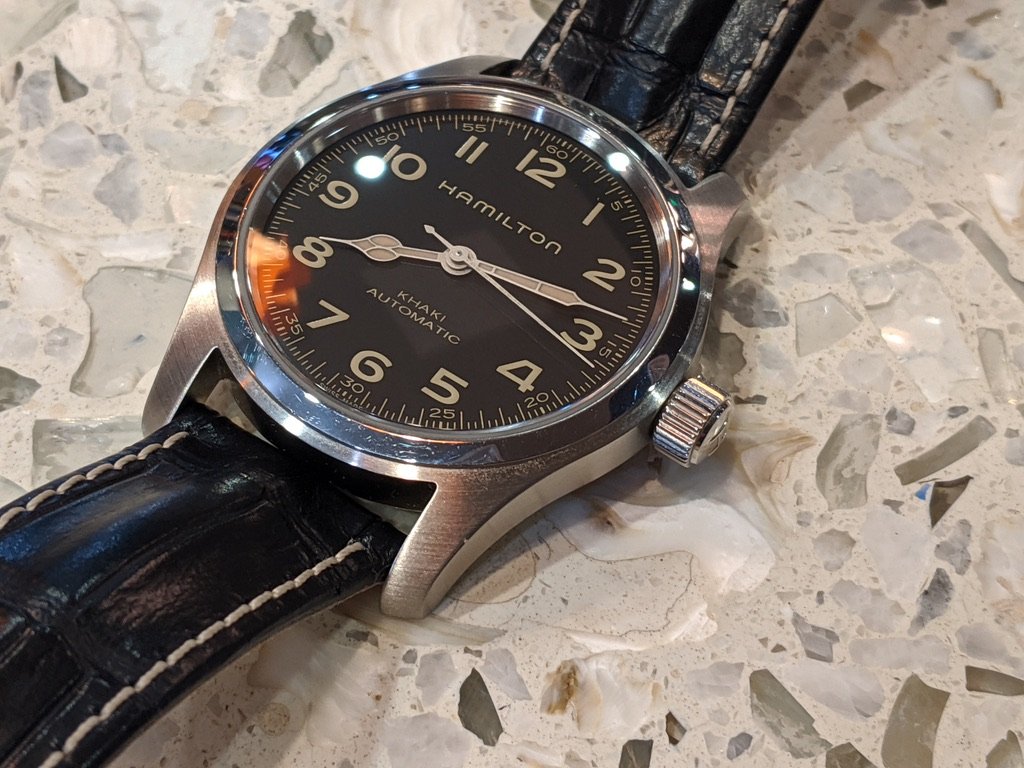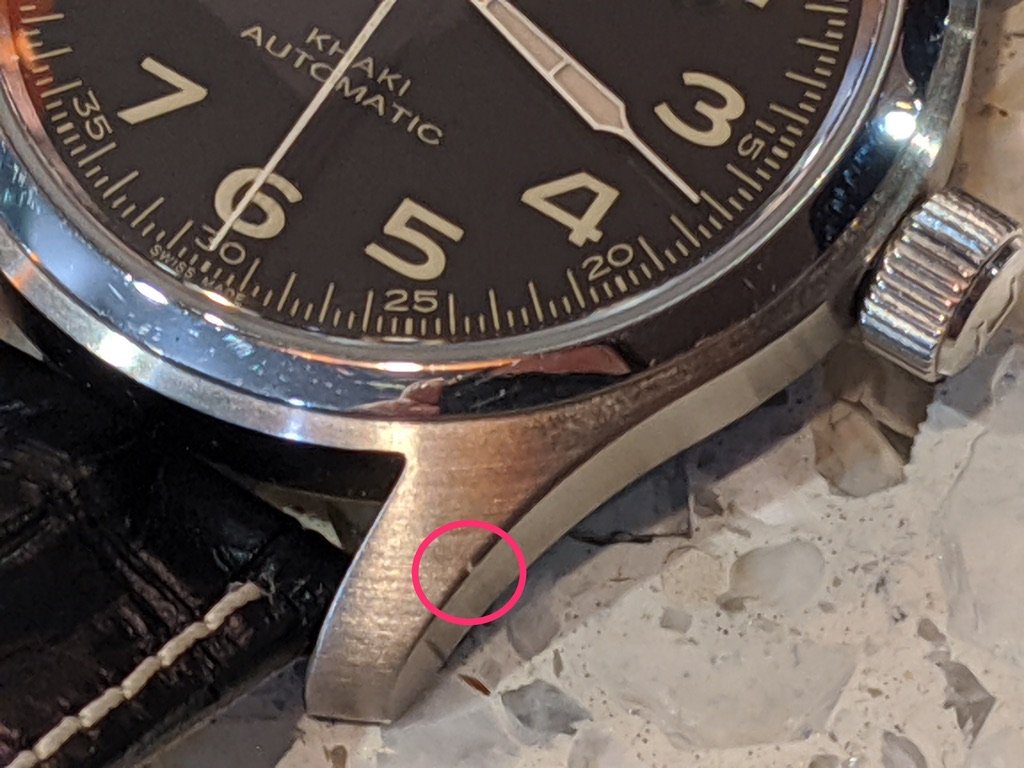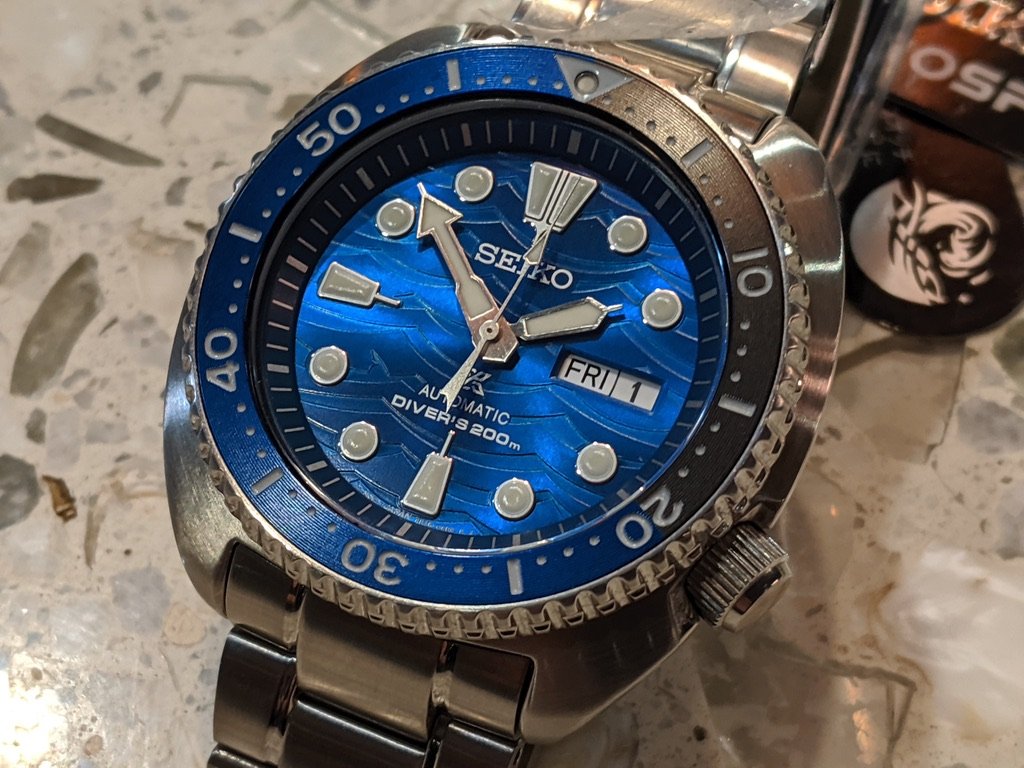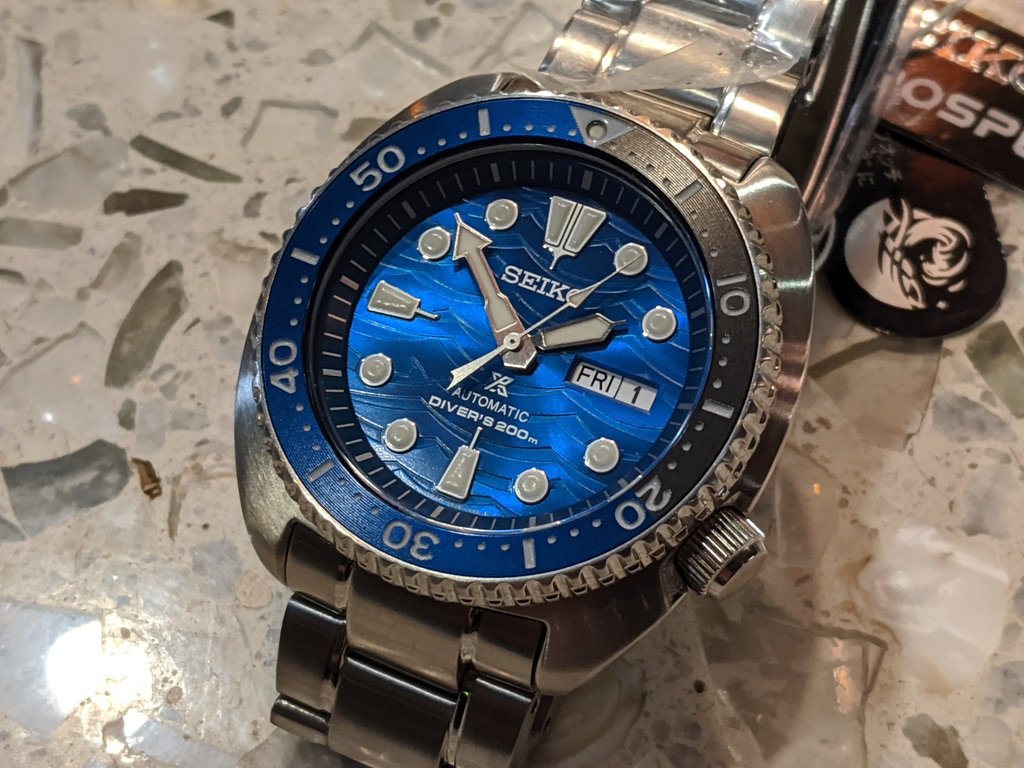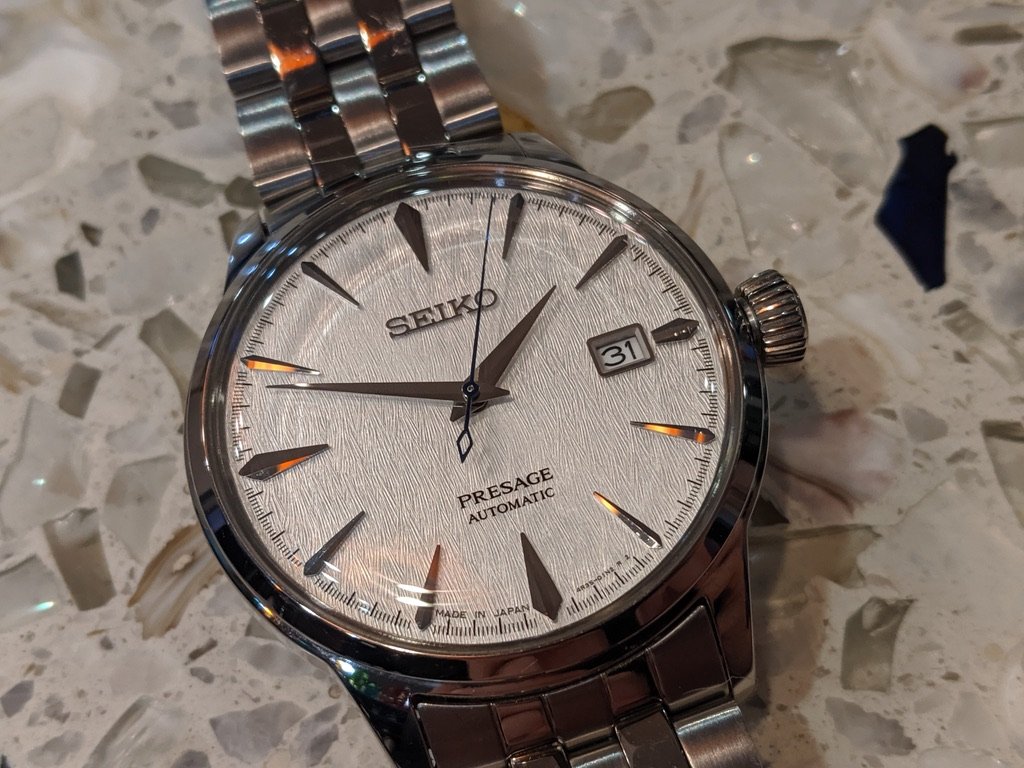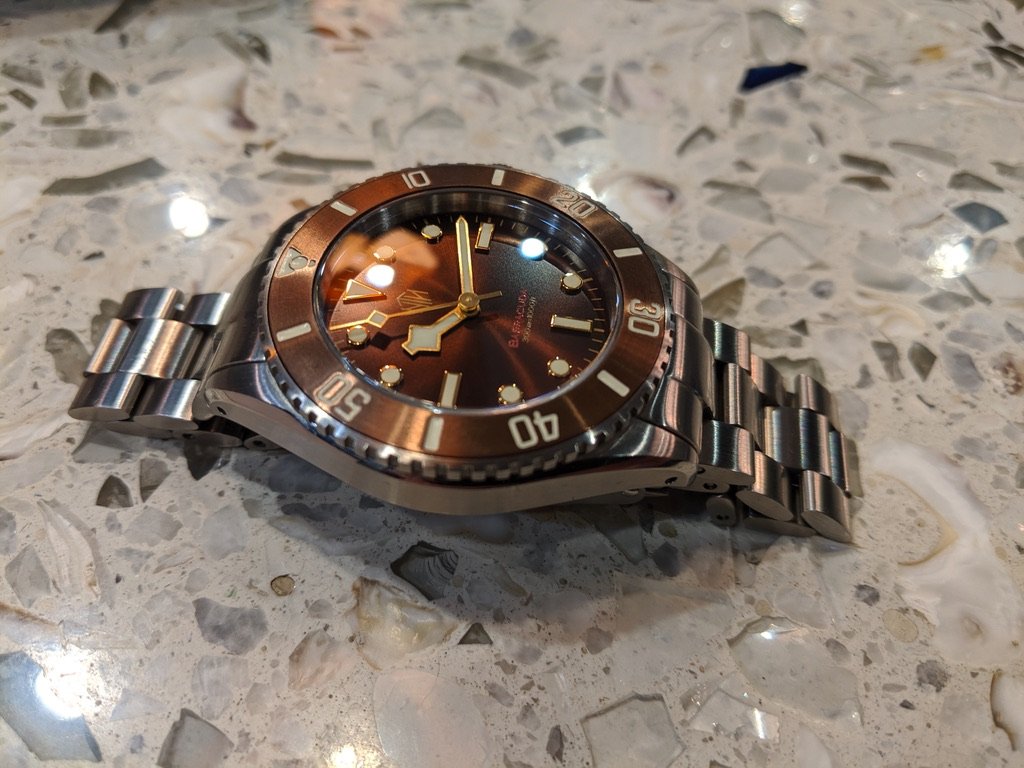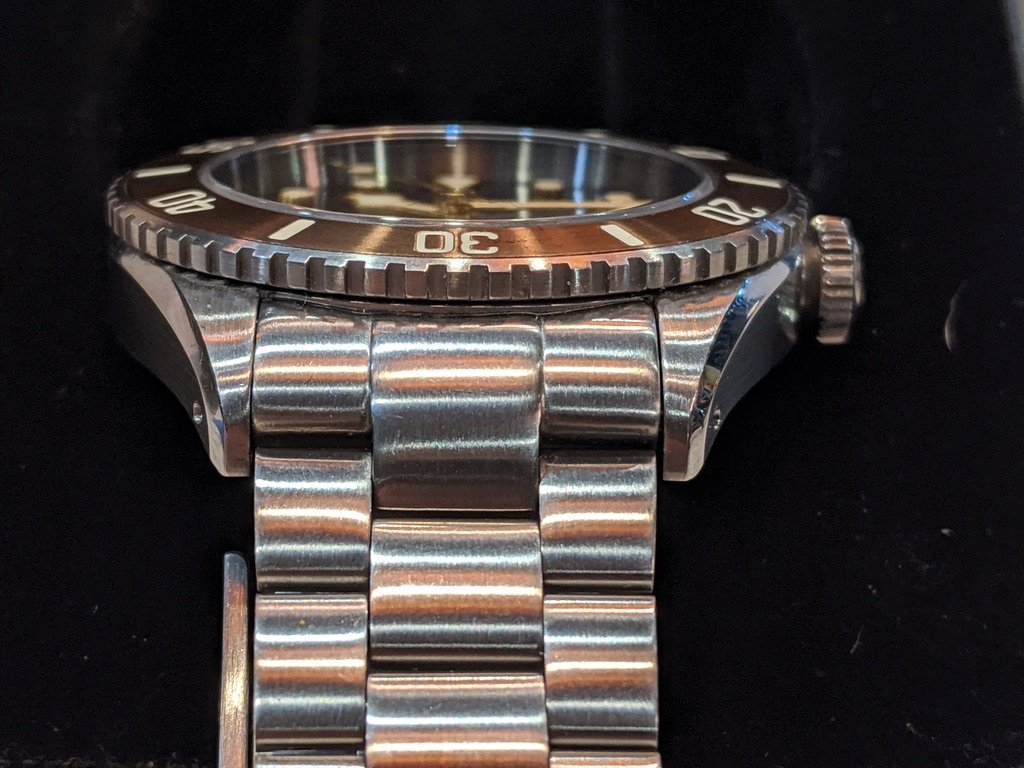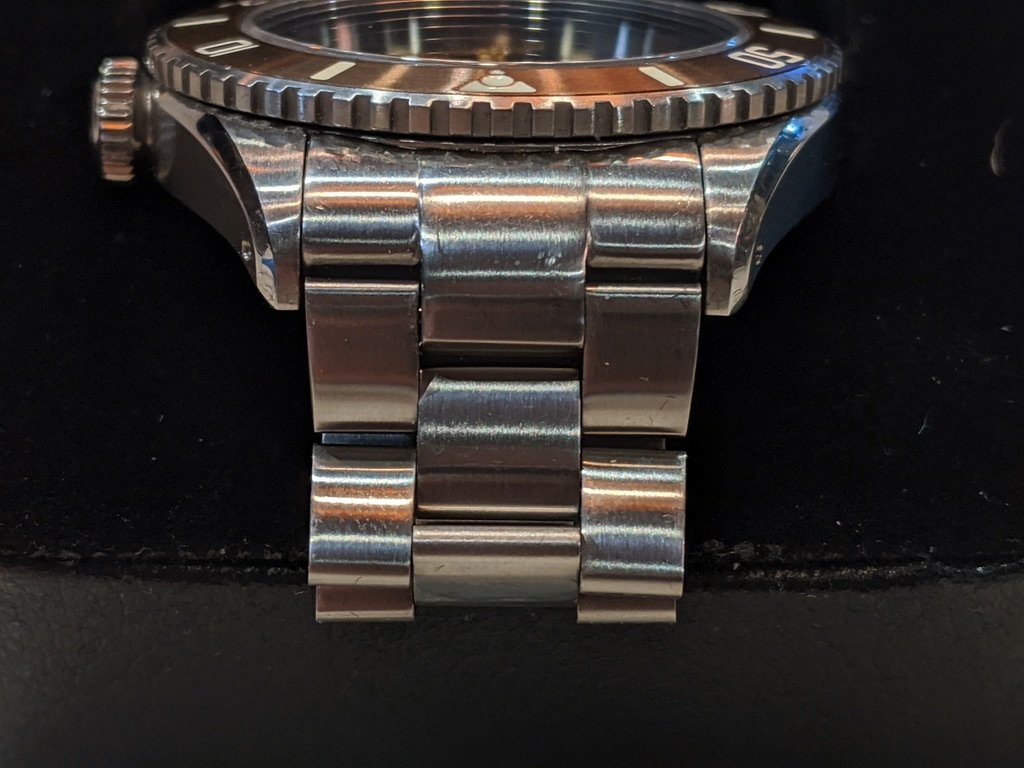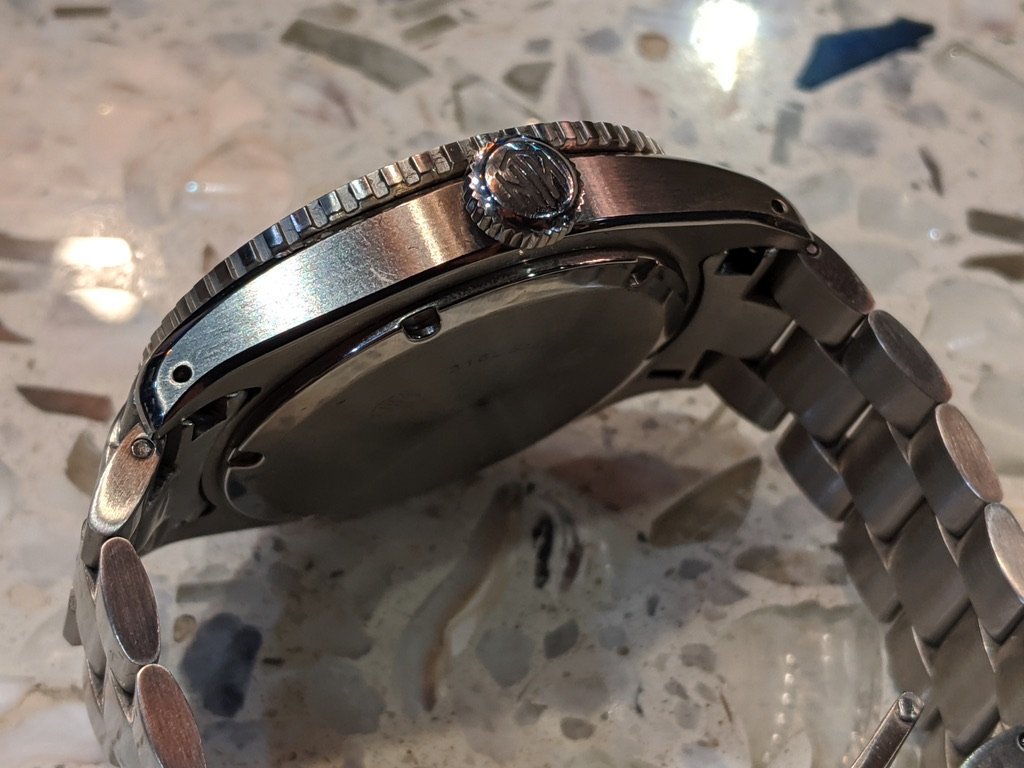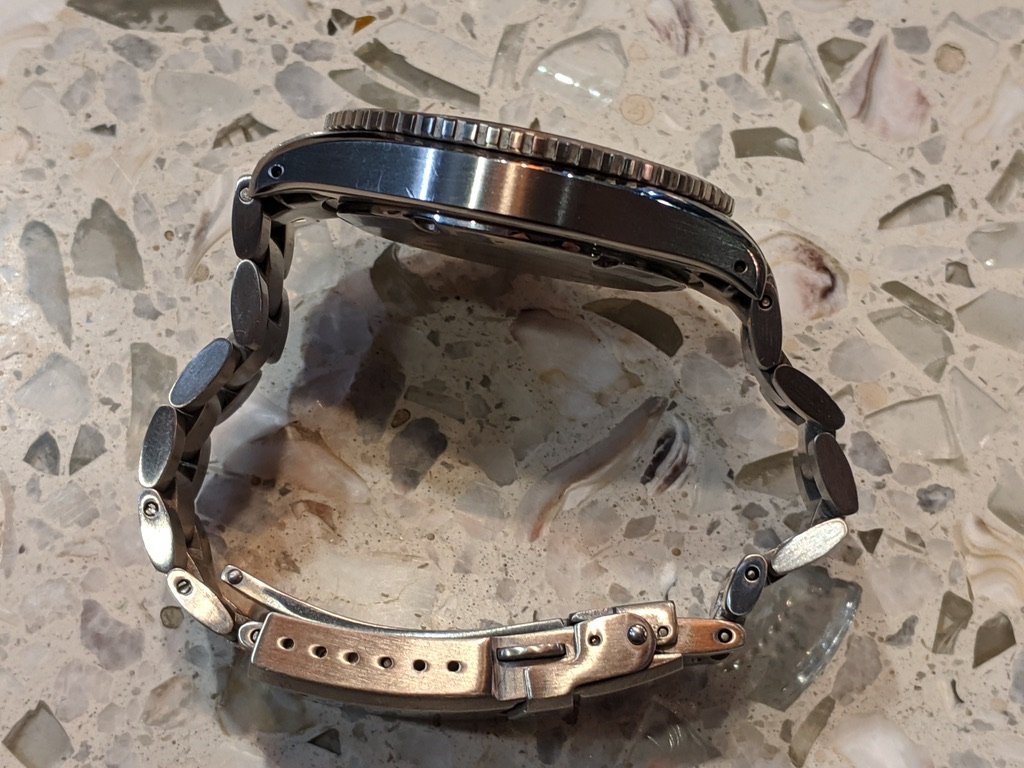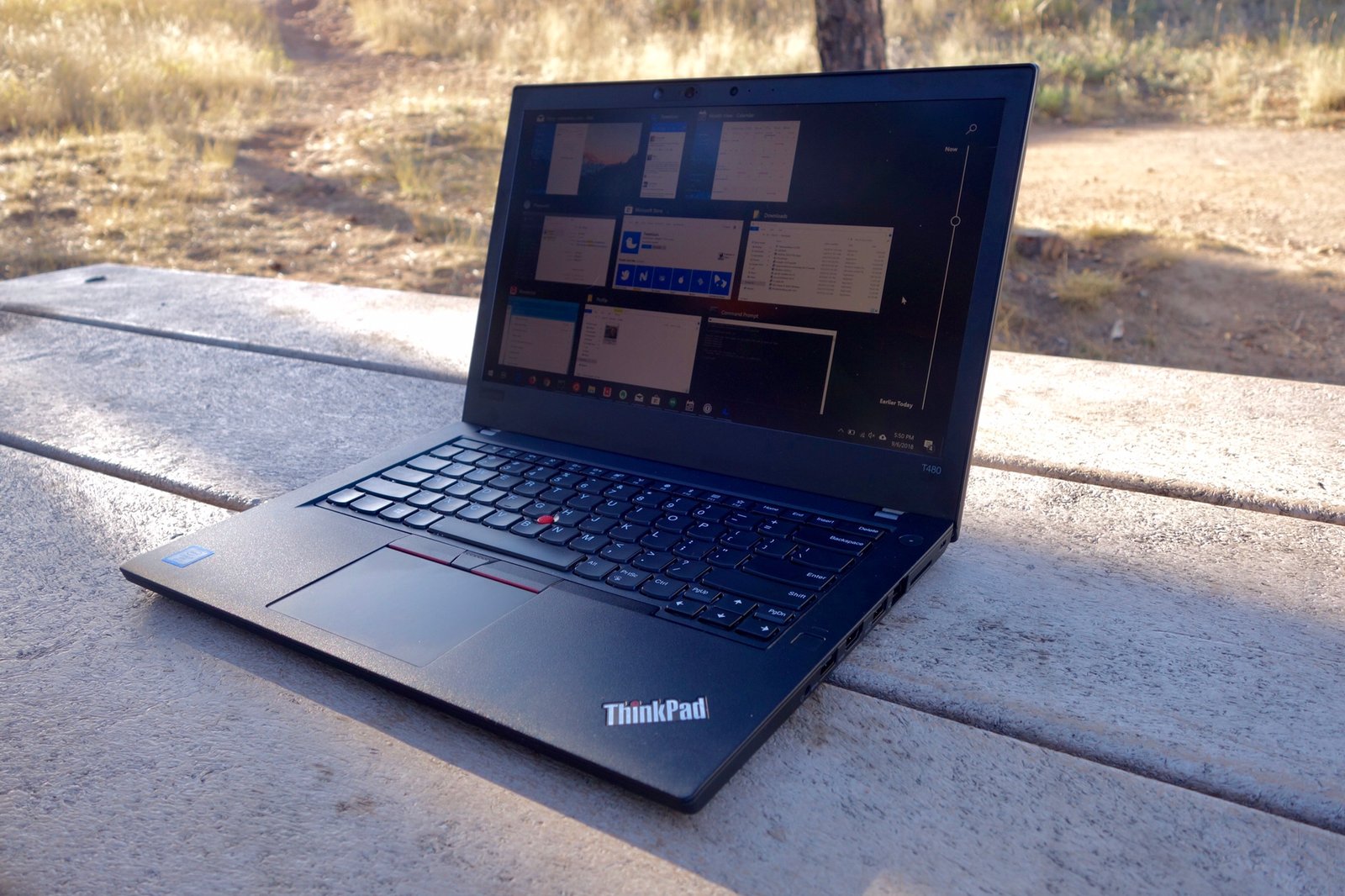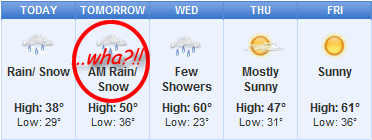Welcome to WordPress. This is your first post. Edit or delete it, then start writing!
ACL Festival Street Photography
I took my new Sony A7C II all around South Austin last night for its first street photography outing. I caught the crowds leaving the Austin City Limits music festival and bounced a few times between South Congress and 1st Street.
I only took my Sony/Zeiss 55mm f/1.8 lens instead of the 35mm length I’m so used to. These days I mentally compose photos in 35mm, and now I have the itch to practice more around 50mm and 85mm.
The crowds and pedicabs were moving fast. I love low-light photography, but don’t have much experience doing it with shutter speeds over 1/125 sec. And I hadn’t even tested the decade-old 55mm ZA’s autofocus capabilities in low light. I missed focus and exposure a lot.
Lesson learned: Don’t learn new techniques and new gear at the same time. 😛
It may have felt uncomfortable and frustrating, but in a constructive “growing pains” way. I think the next time I go out, I’ll think less and enjoy more. That probably means I should do it as soon as I can!
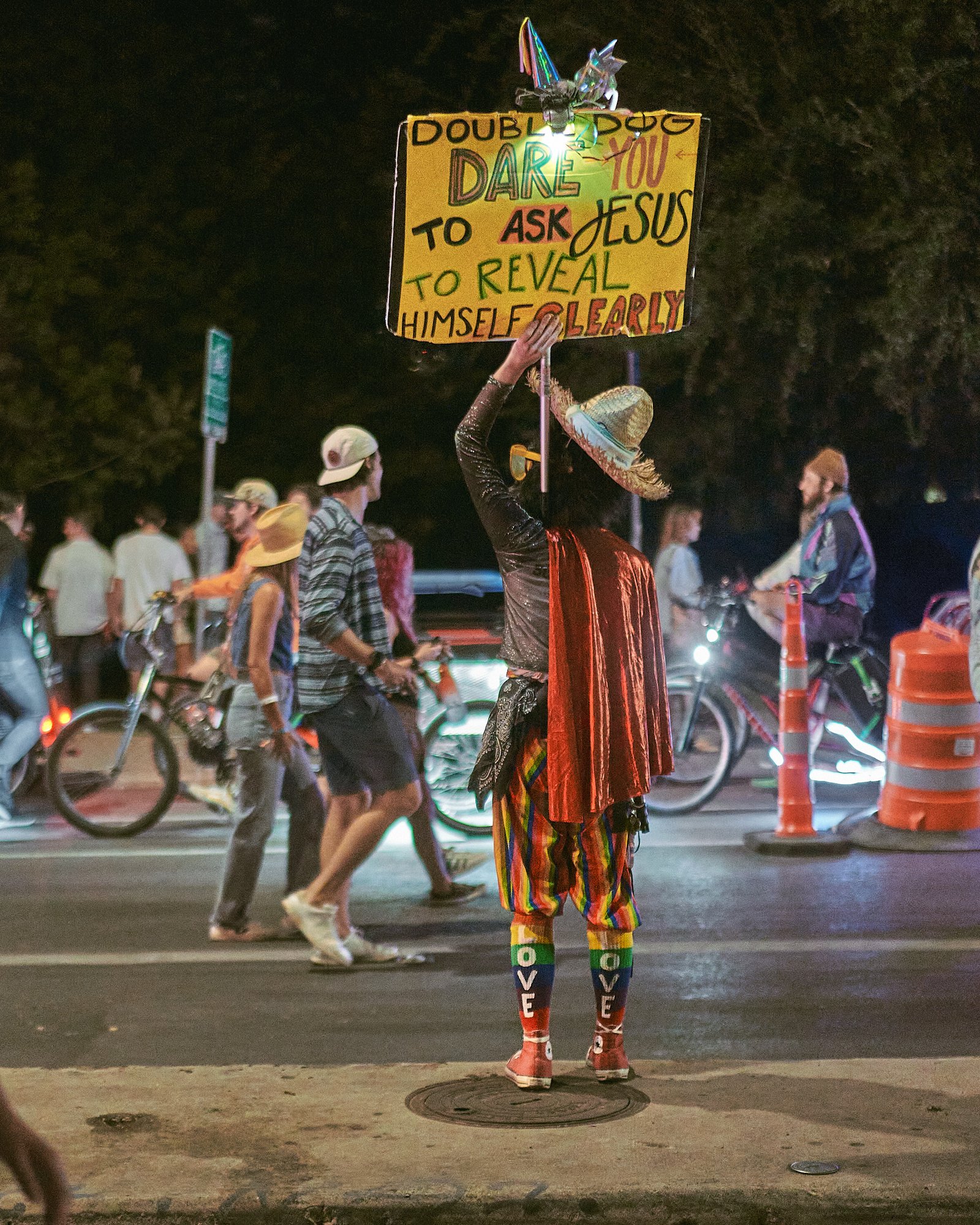
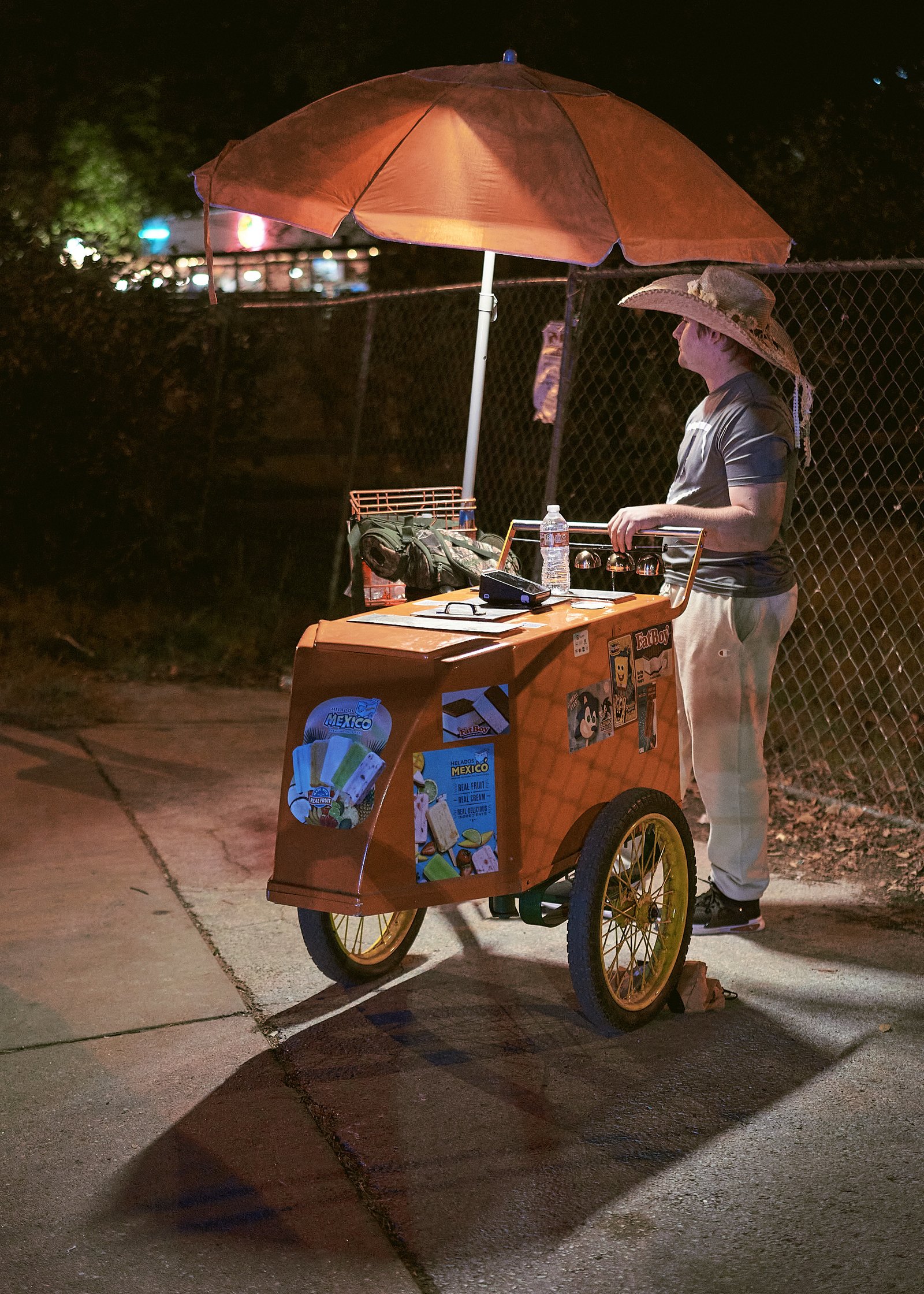
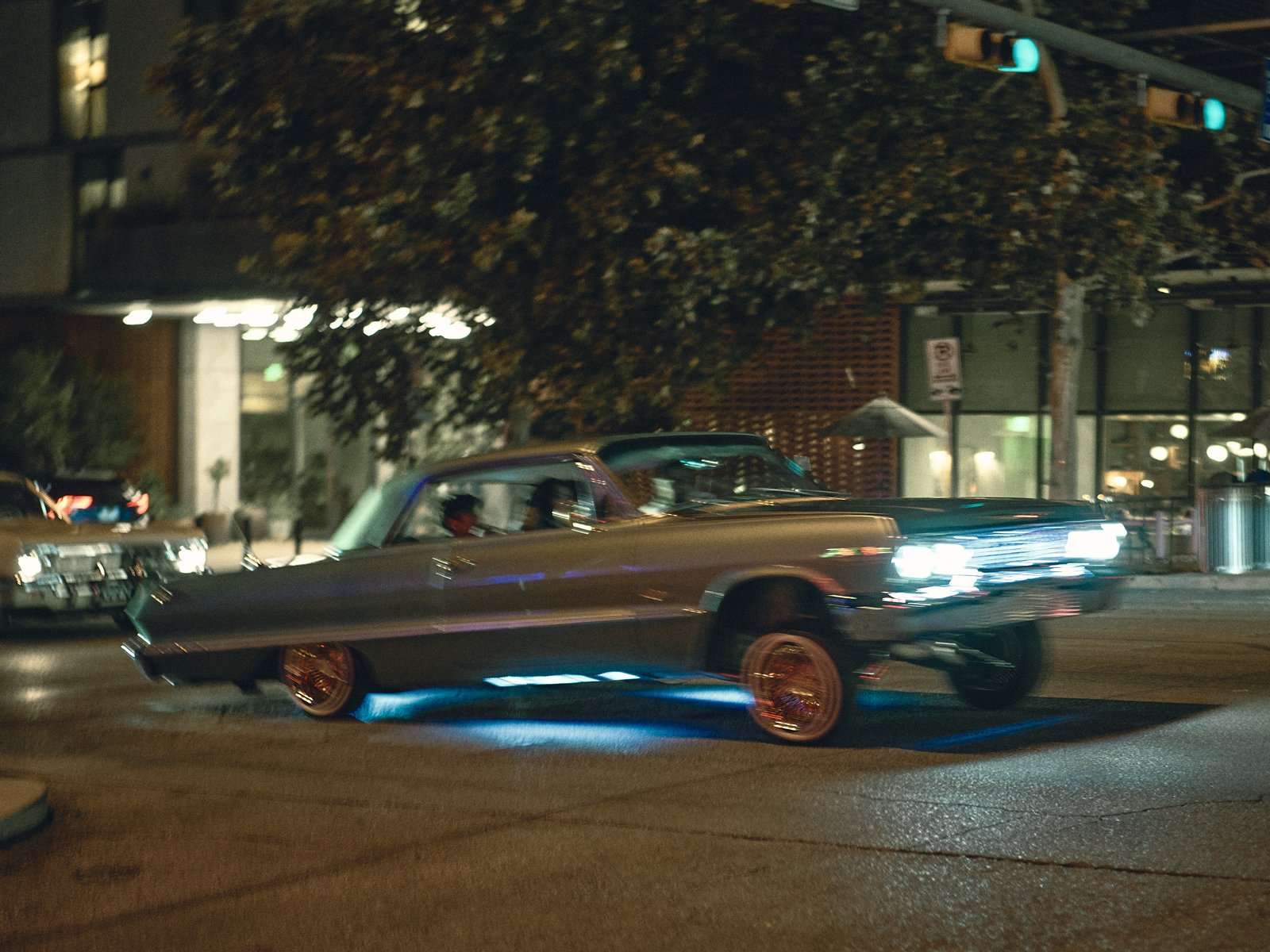
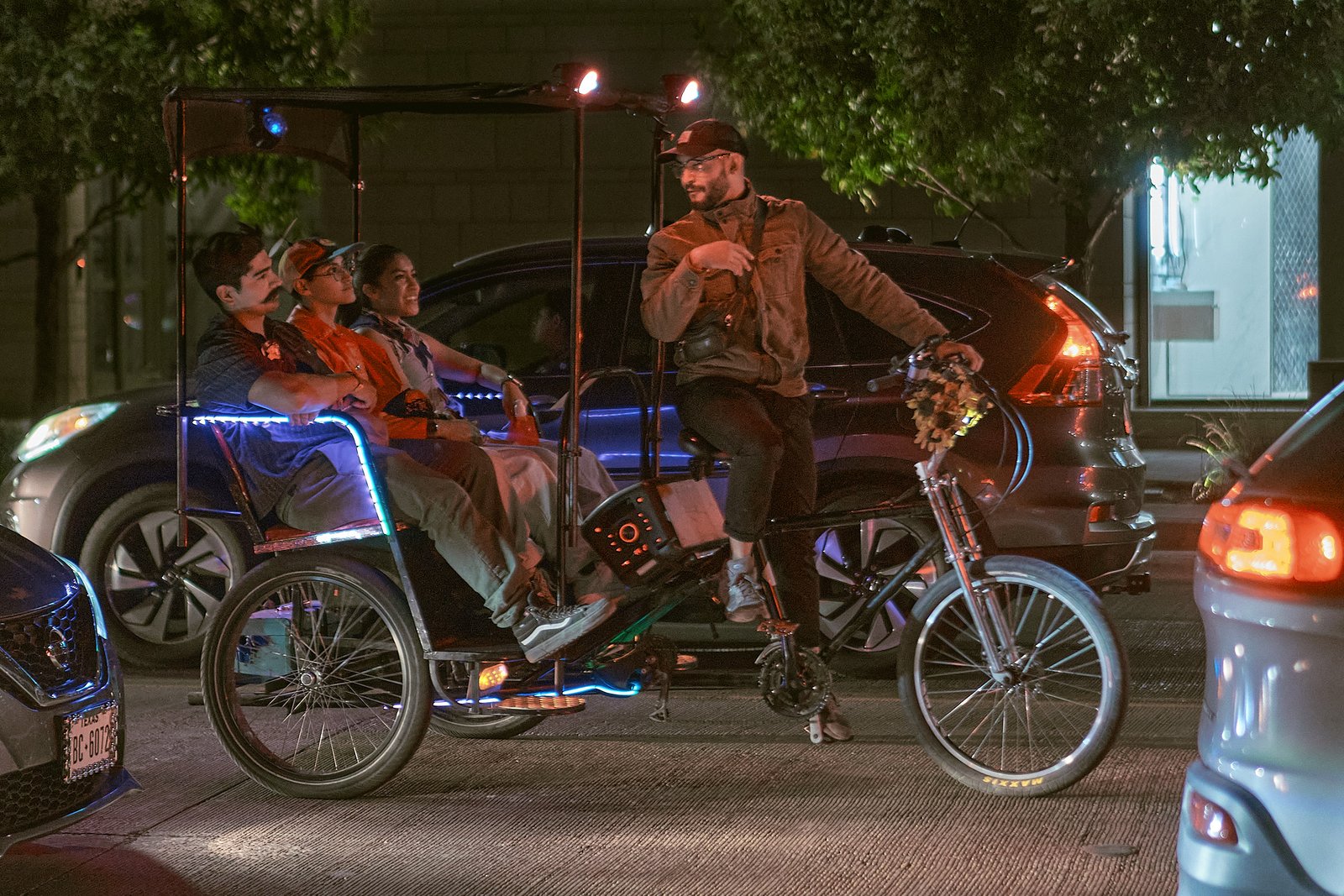

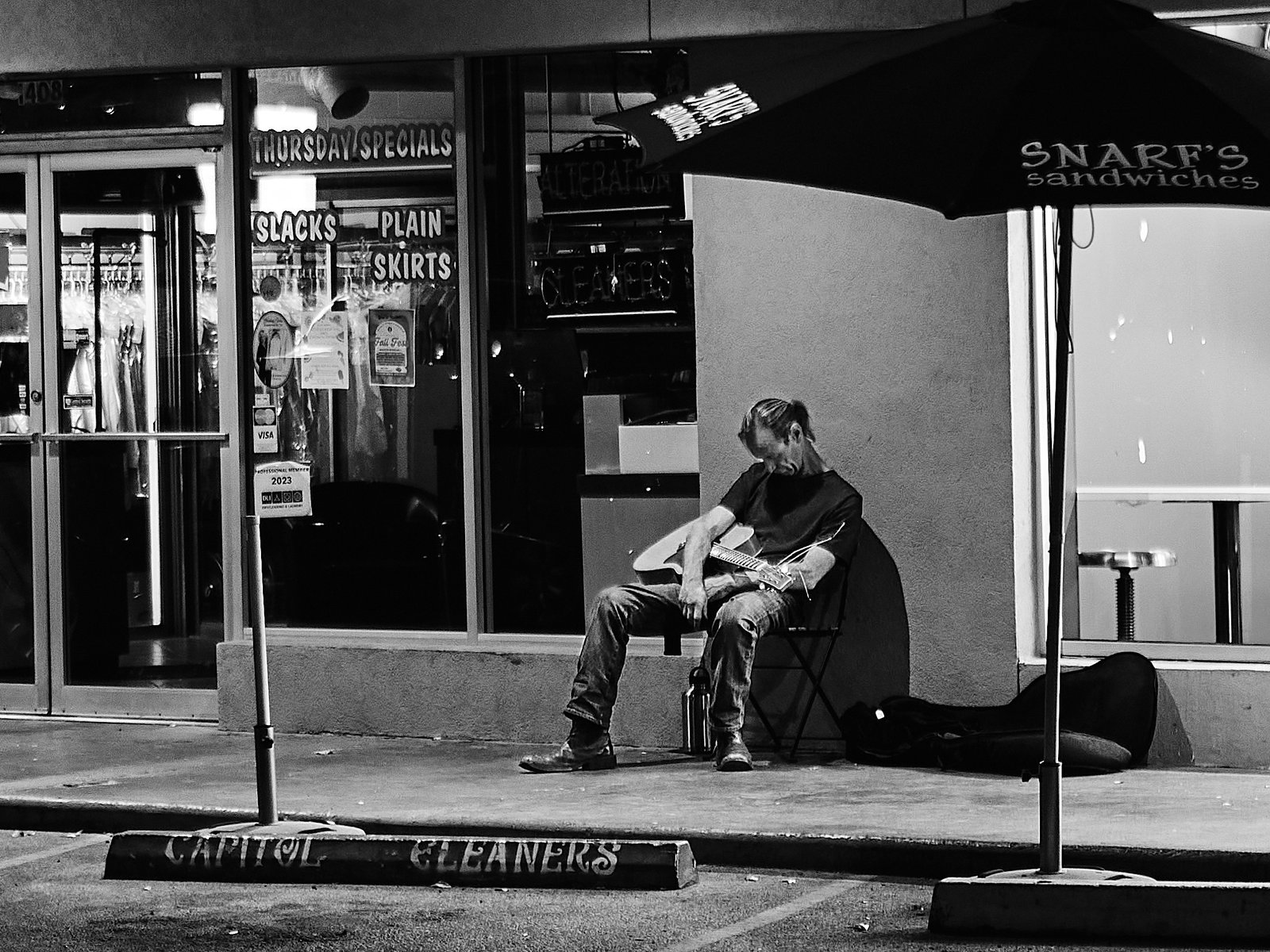
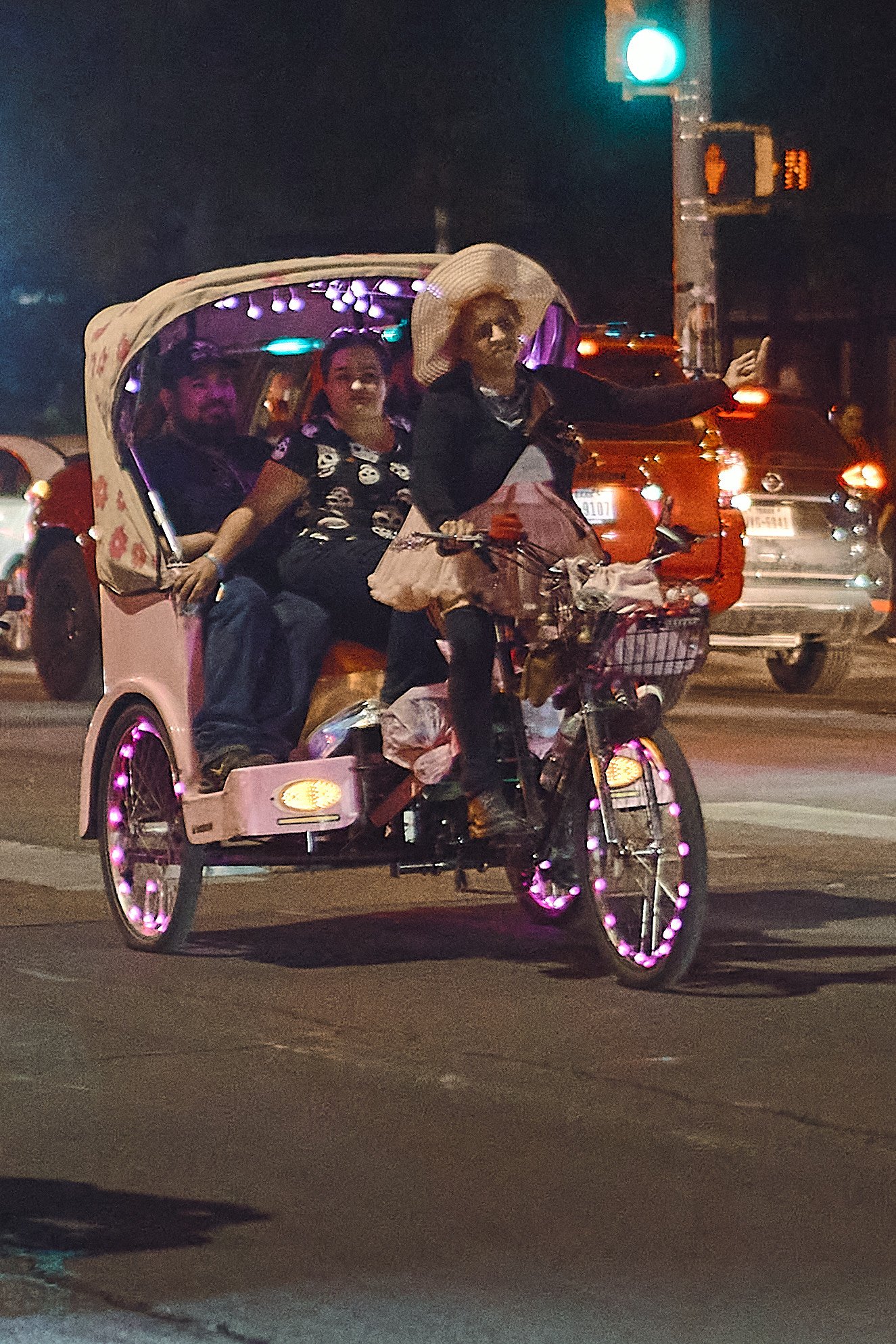

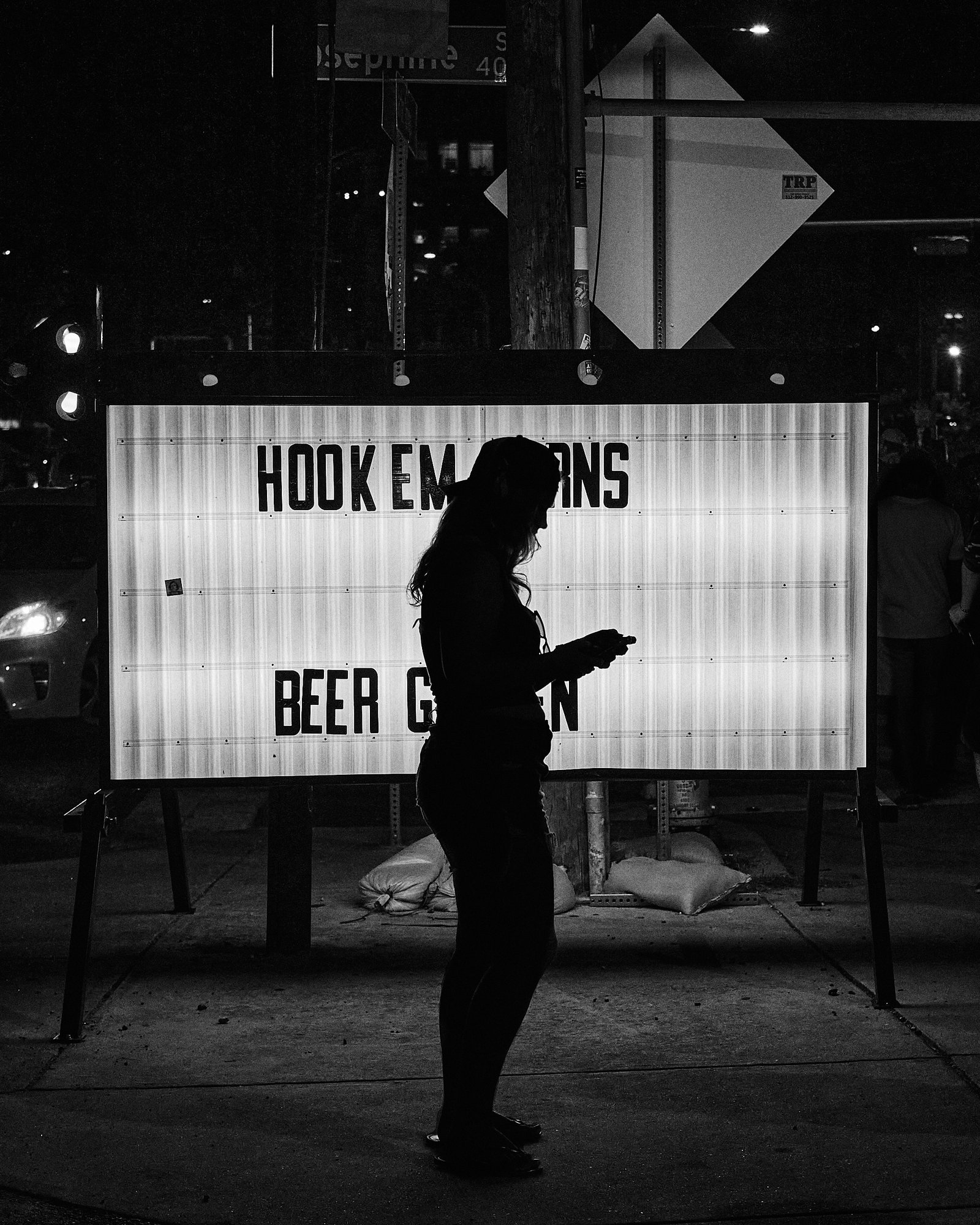
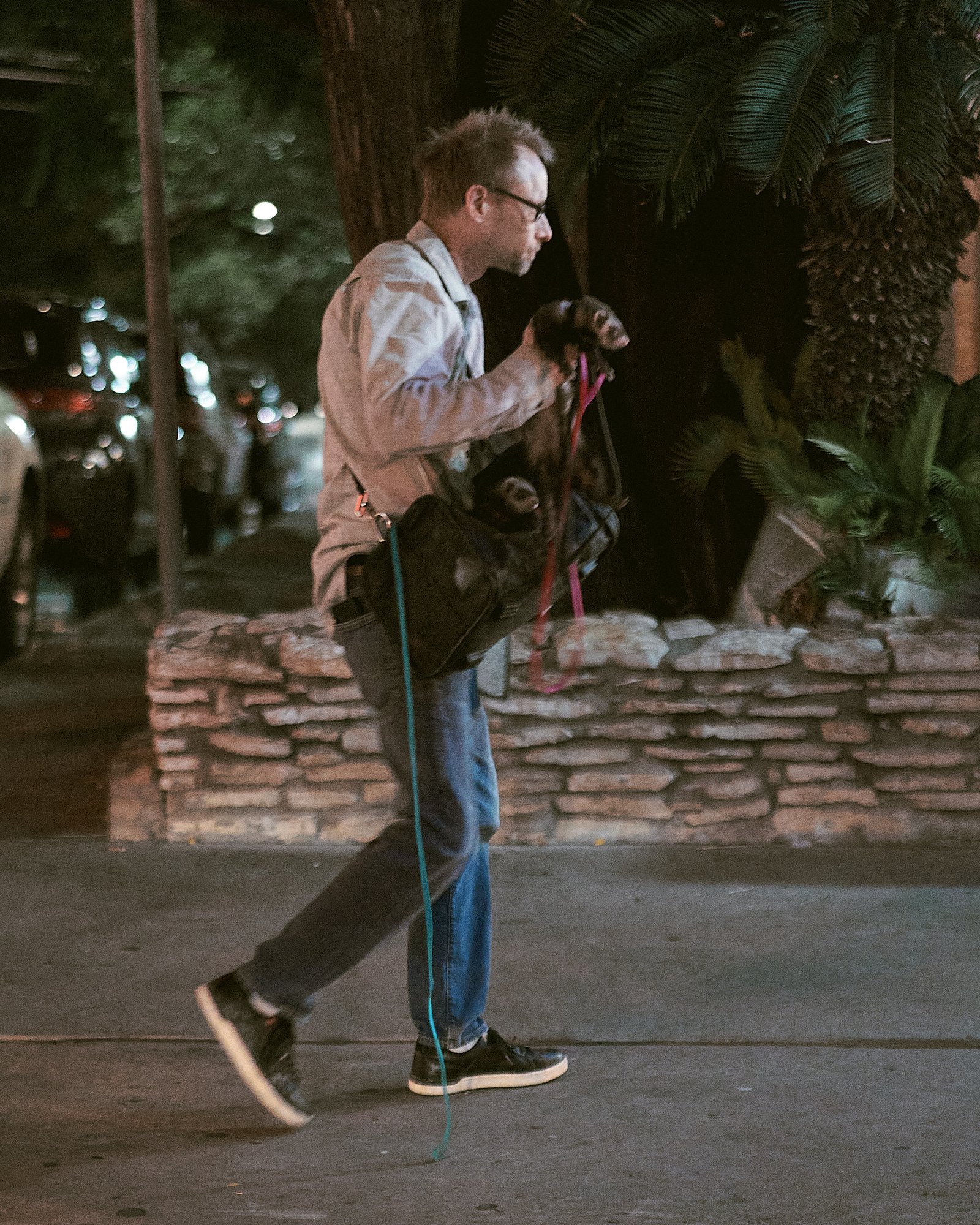
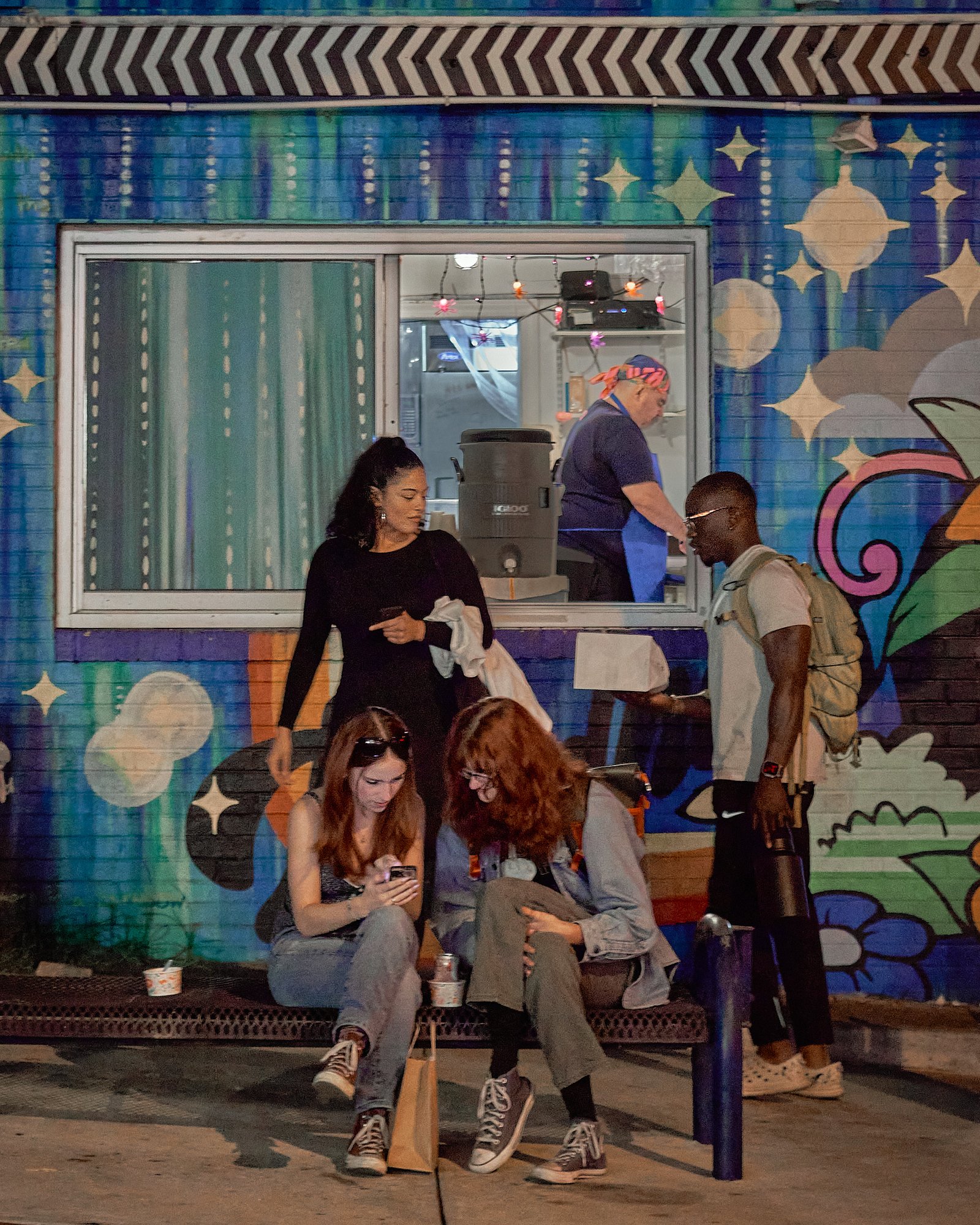


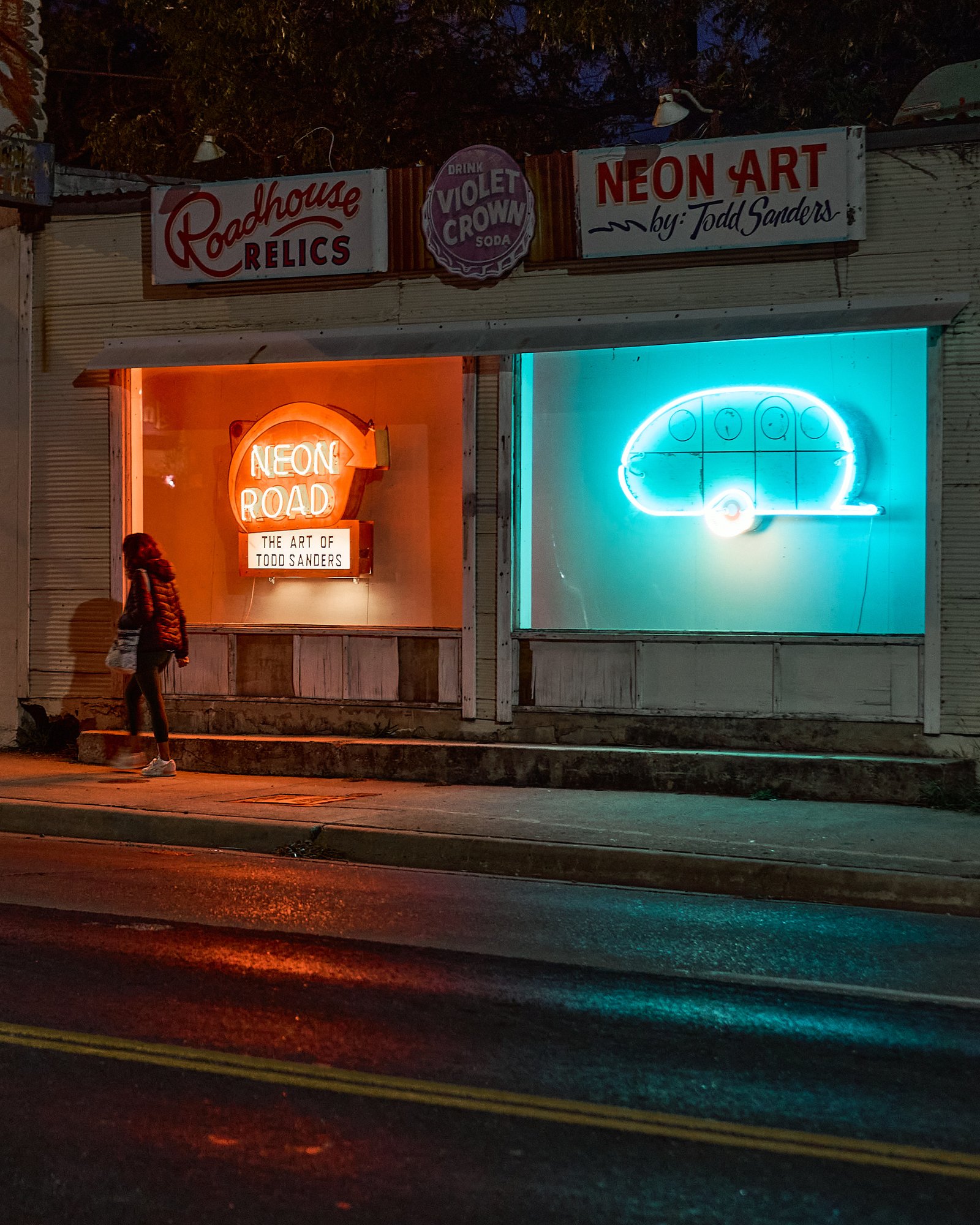
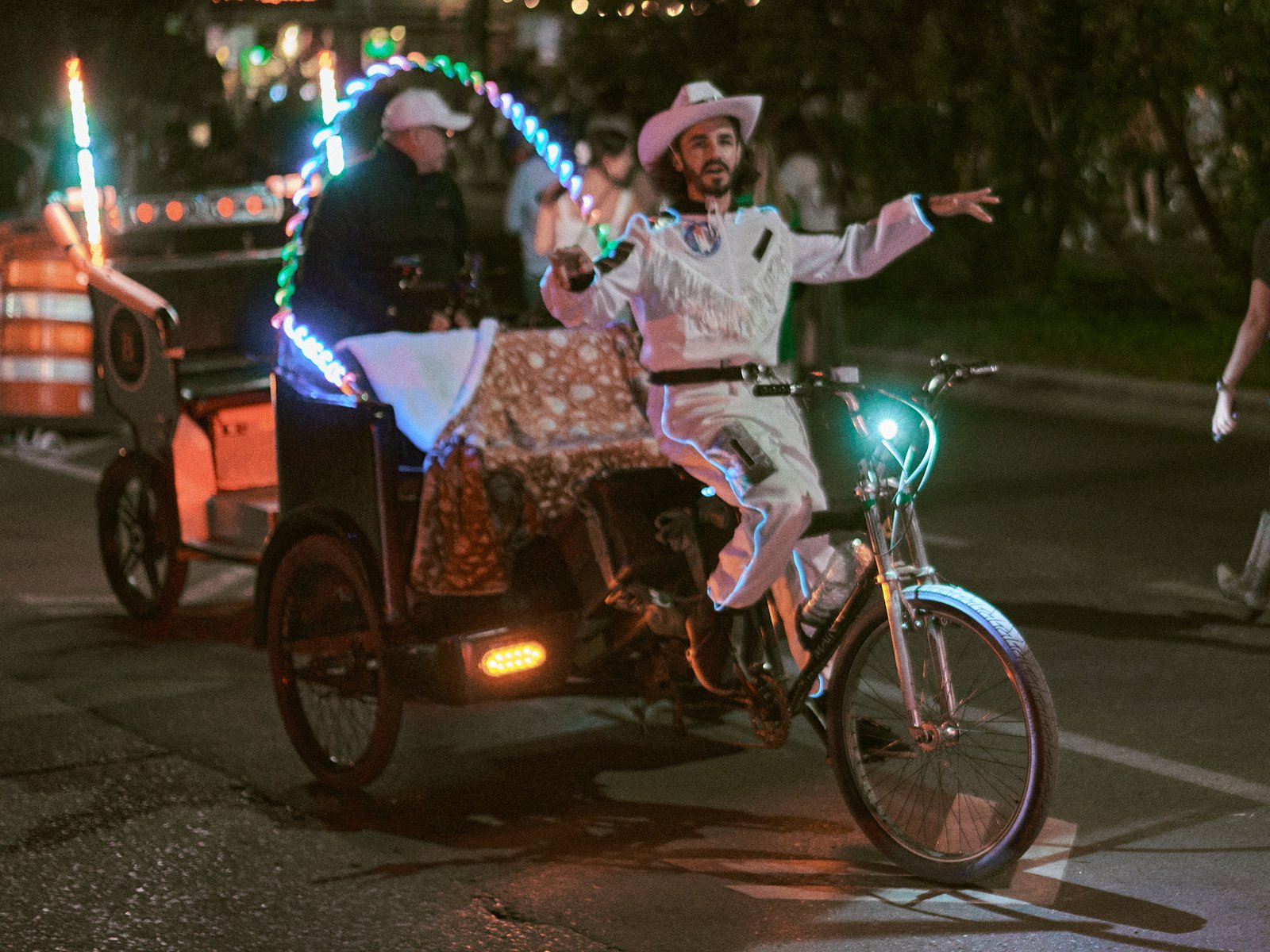
RAW File Support Workaround for Sony A7C II
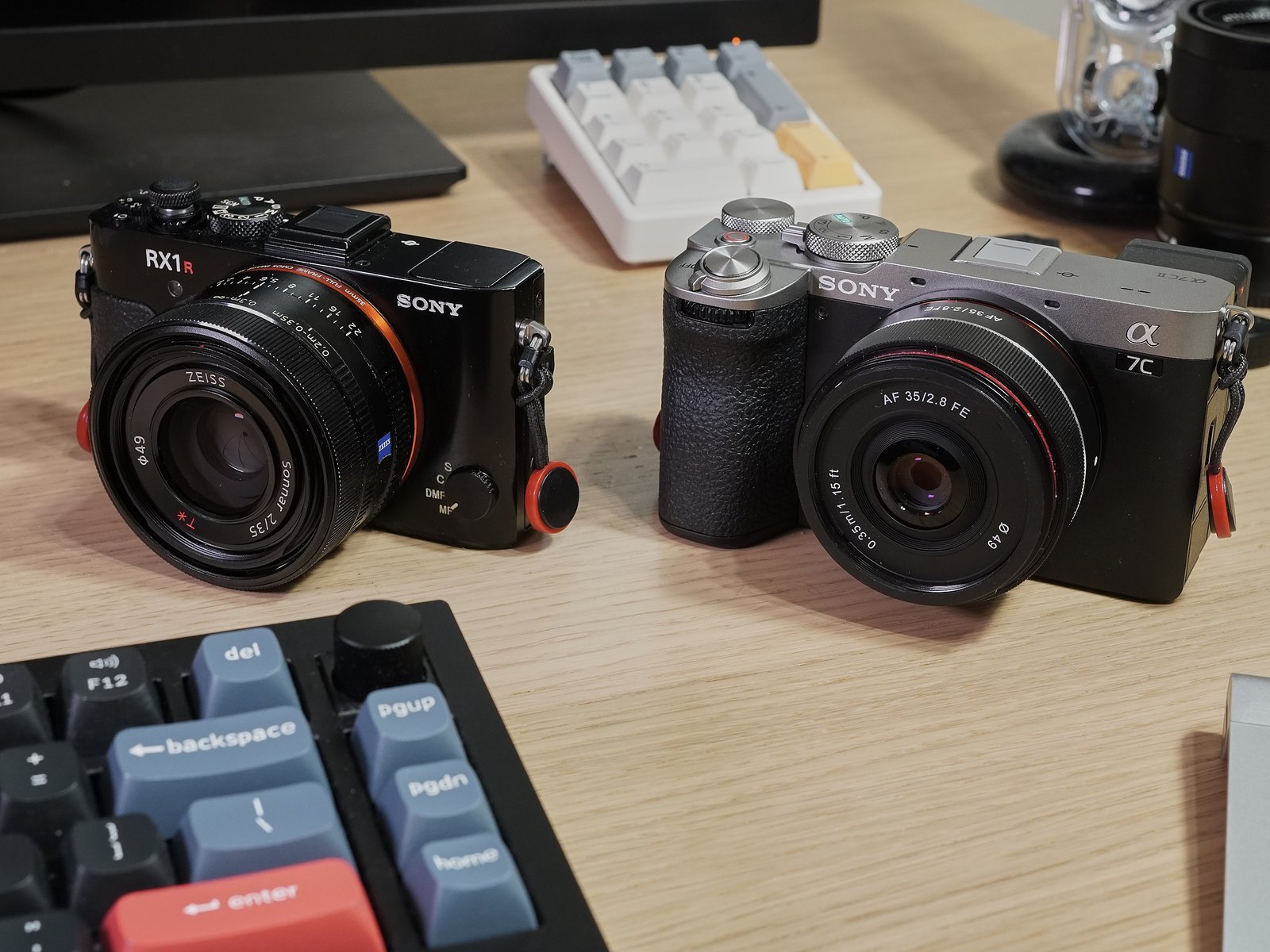
I got the new Sony A7C II this weekend! It is likely to replace most/all of my interchangeable lens cameras. I just love the rangefinder shape, and people seem less guarded around cameras without a serious-looking pentaprism bump on top.
As of this writing, there isn’t much third party support for A7C II raw .ARW images yet. But the A7C II uses the same image sensor as the older, widely-supported A7 IV – so the raw files should be very similar.
I’ve figured out how to make them pretend to be from an A7 IV using ExifTool – it works for my workflows in Capture One and Apple-based raw editors on macOS. And be warned: it’s not entirely stable.
Continue reading RAW File Support Workaround for Sony A7C IILily Rose at Haute Spot, Cedar Park, TX 2023-04-23
Click to embiggen. Best viewed with appropriate background music


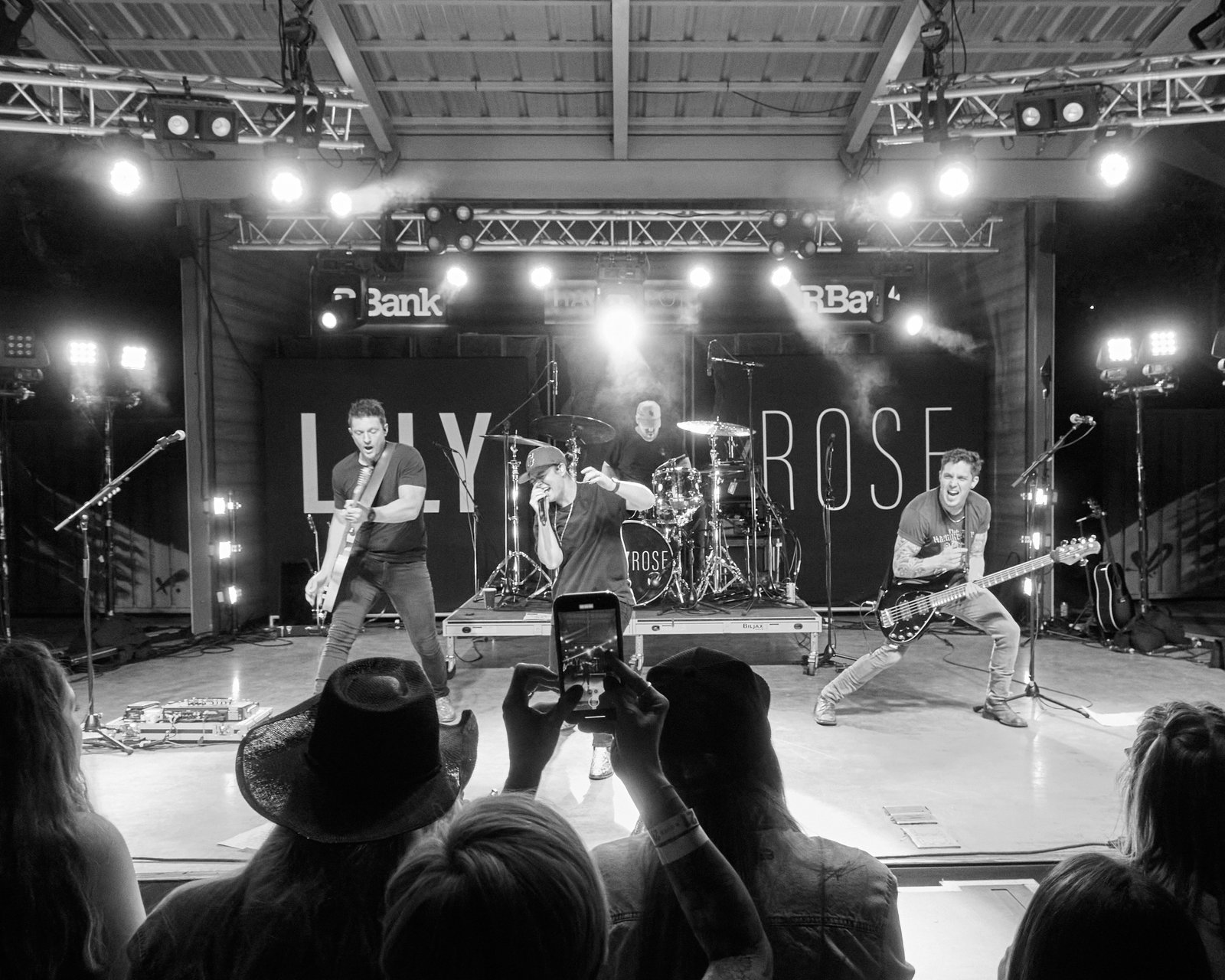
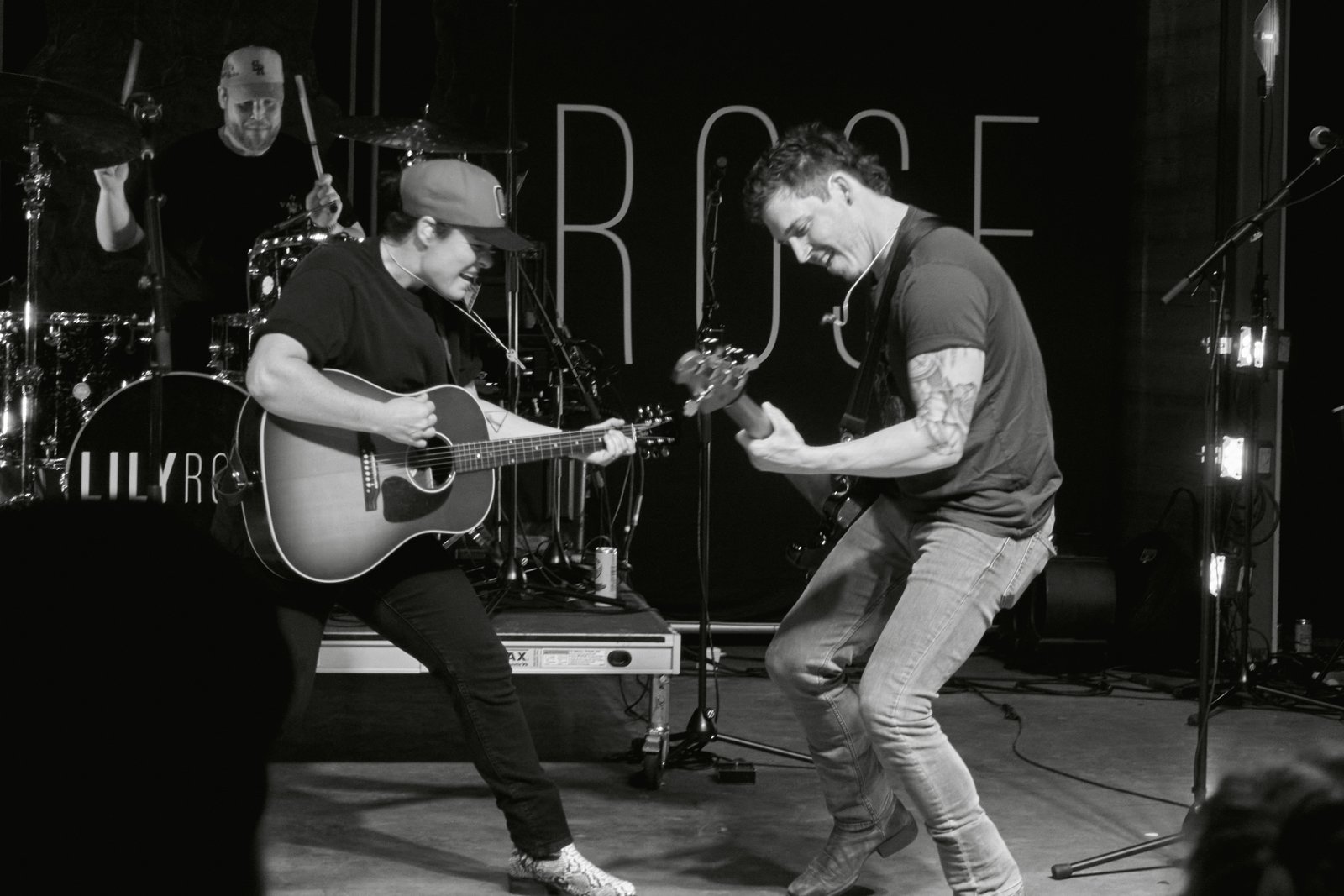
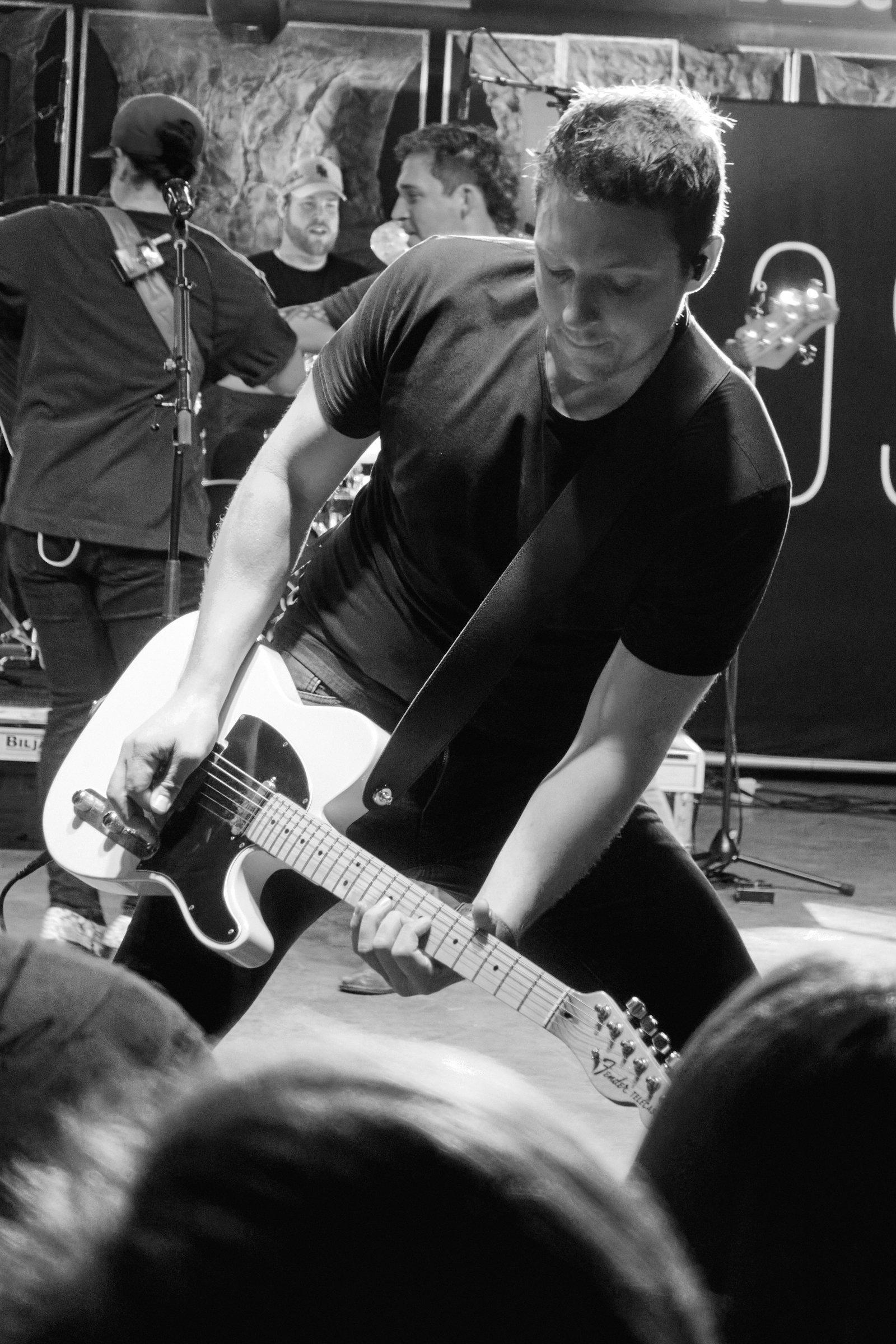
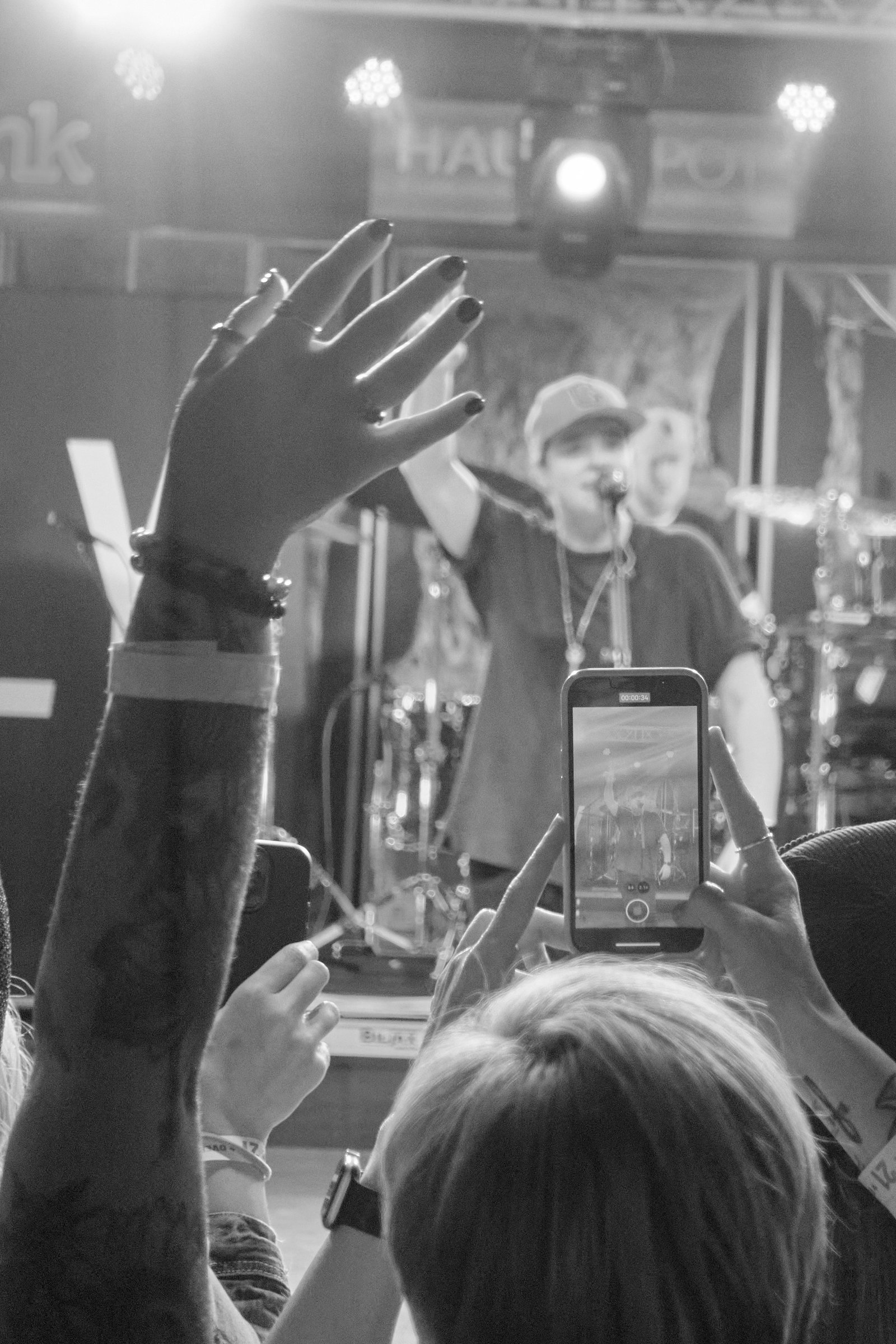
Get in, loser. We’re going racing.

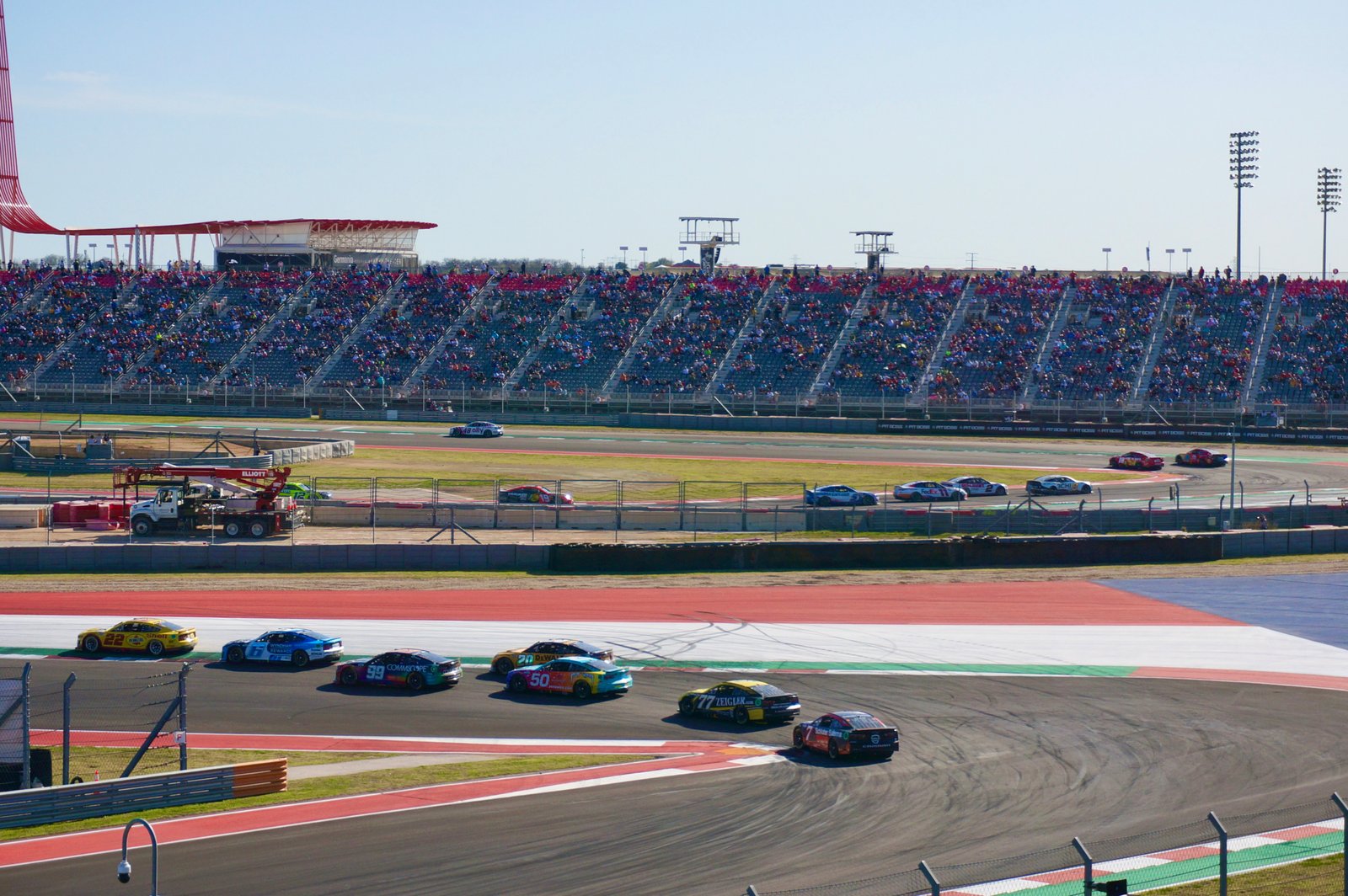
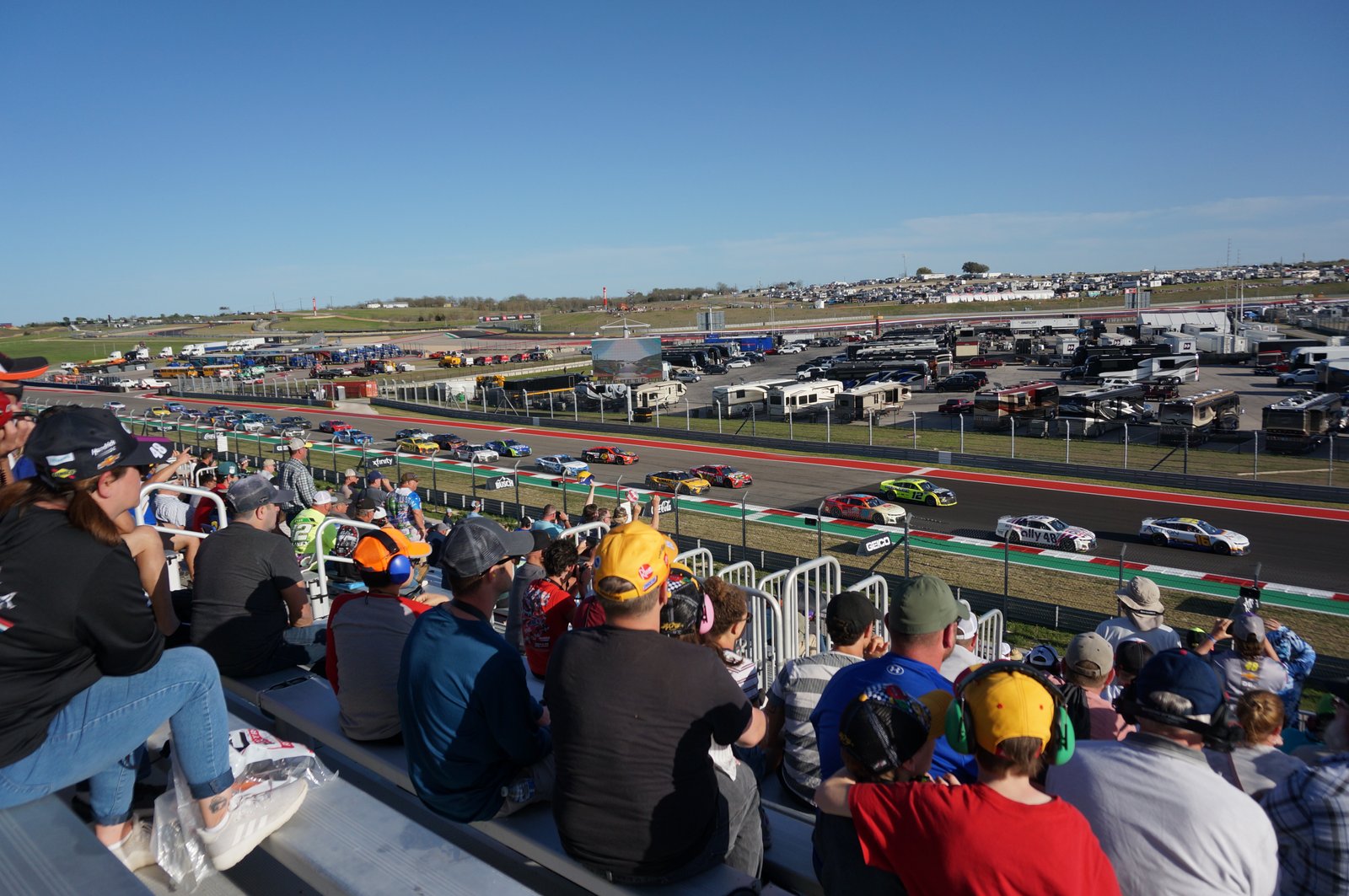

Finally made it to my first big NASCAR race – the EchoPark Automotive Grand Prix at the Circuit of the Americas in Austin.
COTA is a gem. Thanks to Texas hill country, there are great views around the whole track.
Watches for Sale
I recently picked up a hilariously boring hobby: collecting watches. It’s time for me to thin the herd a bit – I’m still learning plenty about the differences between a watch I appreciate and a watch I use. So these are up for sale on eBay (since I haven’t been doing this long enough to have a reputation on the marketplaces without fees):
Hamilton Interstellar “Murph” Khaki Automatic with limited edition “Tesseract” box
Seiko SRPD21 Save the Ocean “Great White Shark”
Seiko Cocktail Time “Fuyugeshiki” SRPC91J
NTH Sub Barracuda Brown
Computers for Pros: Goodbye Mac, Hello ThinkPad
Back in February, I sold my 2017 MacBook Pro. For a couple of years, I had been grumbling about the direction Apple products have taken. I did have problems with the infamous butterfly keyboard. I actually liked the touch bar – except for its tendency to freeze at the exact moment I need to mute my sound quickly. And I couldn’t help noticing the many useful things that had disappeared from my older MacBooks:
- MagSafe.
- A battery charge level indicator
- A light on the charging connector that changes color when the battery is charging or full
- A long power cord instead of a brick that won’t fit every outlet
- A common DisplayPort or HDMI output
- An SD card reader
- The ability for the owner to replace or upgrade the memory, storage, and battery.
I understand and appreciate the iterative design process, especially efforts to simplify products to their essence. But recently Apple seems to be obsessed with making everything thinner at the expense of almost anything else, including a lot of features people rely on all day at work.
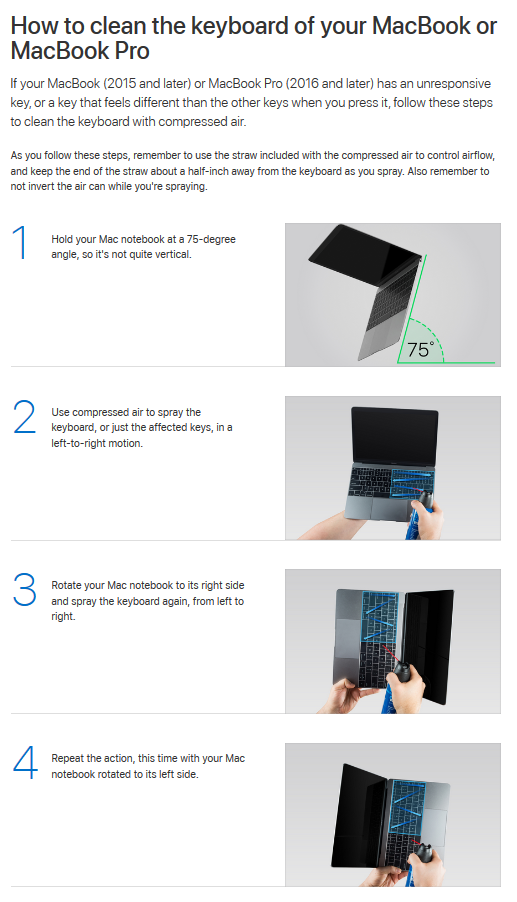
I’m not talking about niche features. I’m talking about a reliable keyboard and a usable power cord in machines that easily cost two or three grand. The idea of sinking more money into one of those machines just seemed like buying a time bomb that would eventually interfere with my work.
At the same time, I picked up a new gig in an all-Windows shop. I used a company-issued laptop with Windows 10, and I was excited to try out the new Windows Subsystem for Linux for a real project. That experiment exceeded my expectations – it wasn’t just serviceable in an environment where I was required to use Windows, but it was a legitimate way out of my recent Mac woes. It’s always been my opinion that Windows 10 is great. But I want to talk about switching from MacBooks to a ThinkPad here, not about switching from macOS to Windows 10.
So about a month ago, I bought a Lenovo ThinkPad for all my consulting work. ThinkPads have their own cult following, but of a very different culture than Apple. Mac industrial design is mostly about a consumer market, but you’d never see a ThinkPad in a hip product placement on a top movie or TV show. They’re all-business, they don’t grab attention anywhere, and they like it that way. And the vast majority of ThinkPad customers aren’t enthusiasts; it’s mostly bulk corporate sales.
That corporate customer base makes ThinkPads a fundamentally different product from a Mac. But considering how many things the Mac has been sacrificing in the uncompromising pursuit of thinness, it has some big advantages to offer someone who likes their aging Mac a lot more than the new ones:
- ThinkPad keyboards are the best keyboards available on a laptop. Its quality tactile feedback somehow enhances everything I do with it. We’re talking deep key travel, and lightly curved keys to fit the curve of my fingers. Page Up/Down keys right with the arrow keys. I struggle with being too long-winded in my writing, and this keyboard might be making it worse because I enjoy typing on it so much.
- You can choose whether the Fn key turns your function keys into media keys, or your media keys into function keys. And there’s a user-customizable key as well.
- ThinkPads ship with a very clean Windows build. They rolled all their OEM-specific controls into one application, and I think it doesn’t even run by default. No Lenovo-installed third party apps. (Windows 10 has some annoying default stuff, like Candy Crush Saga, that can be removed easily.)
- Corporate IT departments want the ability to repair laptop components themselves instead of shipping them back to the factory, so ThinkPads have loads of parts that can be replaced or upgraded by the user inside. This is especially important for components like the battery, memory, or storage.
- Those part upgrades also mean you can save a significant amount of money upgrading these machines yourself. Apple gets to charge ridiculous markups on storage and memory, and buyers have no choice because everything comes soldered onto the board.
- You get several good and reasonably-priced warranty options at the time of purchase. You can choose the duration, as well as an option to have someone come to you for repairs instead of sending the machine to the factory.
- I criticize Apple for sacrificing functionality in the pursuit of thinness, but I still value portability – just not to Apple’s extremes. ThinkPads offer some very portable MacBook Air competitors, and at the moment they’re far more powerful as well since it’s been a long time since the last MacBook Air refresh.
- If you don’t want the most portable model available, you can get a laptop with interchangeable or extended batteries.
- Miss non-reflective matte displays? Those are still an option on many ThinkPads, including mine. I can’t put a price on the ability to work from a picnic table outside next to my dog without tons of screen glare.
- Also, Apple’s refusal to put touch sensors on the main display is silly and wrong. Windows machines that support multi-touch and graphics pen input are so good.
But not everything carries over perfectly for someone used to Apple products:
- MacBook Pros have every ThinkPad beat on display quality. Most ThinkPads have multiple display options, because the display is one of the easiest places for an IT department to cut costs on a bulk order. So there are some truly dismal display options on the low end. The high end options can be very good. The best ones have 100% Adobe sRGB coverage and would be suitable for professional graphics work (especially in tandem with a Wacom pen) but they still don’t push quite as much brightness as a MacBook Pro can. (I think the Microsoft Surface line has better displays on average, but at the high end everyone has great options.)
- Apple’s thinness crusade does give them a solid advantage in the “powerful and portable” category. Almost all the portable ThinkPads use Intel U-series chips (these are the same class as what’s in the MacBook Air). They have vastly improved compared to the generation of U chips currently offered in the Air, but they still are better for everyday workloads than they are for long renders or compiles. The one exception to this is the just-released ThinkPad Carbon X1 Extreme, which can compete head-to-head with a 15″ MacBook Pro. But they don’t have a 13″ MBP equivalent.
- You have to order online, and Lenovo’s pricing system is notoriously inconsistent. It feels more like buying a car – if you paid sticker price, you’re a sucker. (For the record? I’m a sucker.) There are ways to find third parties who, in exchange for contact details to spam endlessly, will give you a Lenovo corporate discount code. And the discounts are significant. Sometimes they have big holiday sales as well. But ugh, what a hassle.
So it’s been a month now. I had cold feet when the device was coming, and was prepared to ship it back and buy a MacBook Pro and a silicone keyboard cover. But I’m so happy with it. In some ways, I think my preferences might be more suited to a ThinkPad in the first place – I get a similar kind of joy from other belongings that are built with durability in mind, like my Toyota truck or my Levi’s jeans. The unibody MacBook used to be a great fit on that list, but the ThinkPad has been quietly getting better and better at this for 26 years now.
I know some people would be better served by a different choice. Windows 10 won’t fit everyone’s needs as well as it does mine (especially for multimedia work). I also have a high opinion of the Microsoft Surface line in terms of the overall package, which looks a little more like Apple’s in general. And heck, a lot of my gripes about current Macs can be worked around with an external keyboard. Lenovo even offers the ThinkPad keyboard in an external bluetooth model 😉
Specs for my ThinkPad T480
CPU: Quad-core Intel Core i7-8650U (8th-gen Kaby Lake R, 15W, 1.9GHz base / 4.3GHz turbo)
GPUs: 2GB Nvidia MX150 discrete; Intel UHD 620 integrated
Memory: 32GB DDR4-2400
Display: 14.0″ WQHD (2560 x 1440) IPS anti-glare (non-touch)
Storage: 1TB SATA SSD (I used one I bought earlier this year)
Biometrics: Touch fingerprint reader, IR face login
Dimensions: 13.25″ x 9.15″ x .078″ / 336.6 x 232.5 x 19.95 (mm)
Ports, oh so many ports: Gigabit Ethernet, HDMI, SDXC, 2x USB 3.0 type-A, 1x USB type-C (full capabilities), 1x Thunderbolt 3 (full capabilities), 1/8″ headphone/headset
Reflecting After 2 Months Of Full-Time RV Living
How are things going?
Really well. Much better than expected. I spent a year and a half anxiously questioning the entire decision to live on the road, as well as sweating the many things to learn and responses to things that could go wrong. Other full-timers warned me to expect the first few months to be difficult. But that ended up an anticlimactic exercise for me – it was constantly on my mind for 16 months of research and preparations, but so far, once I set off, it really hasn’t demanded much attention from me in my daily life.
Where have you been so far?
My first 2 weeks were at a county park at Horsetooth Reservoir just outside Fort Collins, Colorado. This stay included about a week worth of single-digit (F) temperatures and two significant snowstorms, which confirmed that I can happily live in cold weather in my trailer without much hassle.
https://www.instagram.com/p/BRKi1vvgdMh
Then I spent a month in Montrose, a city of 19,000 people on Colorado’s western slope. The location was gorgeous and so was my park, but I didn’t find much of a scene for people around my age.
https://www.instagram.com/p/BSeL1–gwd-/
After that, I took a day off work for a long weekend of my first off-grid camping at Valley of the Gods, which is mixed-use public Bureau of Land Management land in southern Utah. It was a stunning place, and the camping was extremely secluded. I don’t have a generator yet, and had no idea how long my batteries would last from running my lights or heater, but I never saw my battery meter drop below “full,” so that’s good news.
By this point, I was longing to be back in a big city after dropping populations by ~2 Million > ~200,000 > 20,000 in January, February, and March. I ended up booking a week of RV park space in Mesa, Arizona- one city over from Tempe, where I went to high school. I visited a lot of old friends and it was nice to be back somewhere familiar.
After a week in Mesa, I headed for my current spot, which is somewhere hot in Southern California. After barely missing the chance to skip all of last winter, I’m in complete bliss. I started to feel the toll of staying in 4 different states in 2 weeks’ time, so I extended my original 1-week booking here to 2 weeks so I don’t have to jump straight into another relocation.
How is working from the road?
It’s not very different from my previous experience in work-from-home jobs. I need to have separate spaces available for working and relaxing, and that influenced the kind of trailer I bought.
Connectivity is obviously important, and it limits where I can camp. Signal quality can be hard to fully research in advance. I’m relying on the “Coverage?” app and especially camper-submitted cell information from Campendium. I’ve had one campsite where the LTE wasn’t good enough for video chat, and I don’t like introducing that kind of uncertainty into a client relationship. It’s crucial that I give my clients a consistent, reliable experience, and I won’t compromise on that just for the RV lifestyle.
In 2 months, I’ve had 2 interruptions to work: one was an unannounced power outage at a park, and one was when a landscaping crew was working nearby with power tools when I had a client call scheduled. The first time, I relocated to a cafe I’d already worked from, and the second time, I drove my truck to a quiet spot and did my call from there.
By the way, I’m currently taking on web consulting clients! If you know someone with a web app that is eating up way more of their attention than it should be, send them my way!)
What’s your social life like?
My closest friends are spread all over the country and for years I’ve mostly talked with them online. When we get together in person, it feels like we haven’t been apart at all. I have actually seen way more of these people in the last couple of months – people who I never saw when I was throwing all my employer’s vacation days at family holidays. So in one way, that’s great.
I’m relying a lot more on phone calls, video chat, and social media for keeping contact with family. In Colorado I had a close-knit family group and extended friends there who I go longer stretches without seeing. I expect I’ll be feeling the distance more as the months go on, but it also makes me more certain that I’ll want to stop in Colorado for something like 2-4 months once I’m back.
I have yet to really connect and make new friends with any locals. Some of this is what all yuppie twentysomethings struggle with as they leave college for the workforce, and some of it is also a bit of generational friction as I find myself regularly staying in places that are RV-friendly, but also not that happening for young people beyond perhaps some outdoorsy stuff nearby. I used to use a couple of dating apps for serious dating, and now I’ve changed my profiles to very obviously just be looking to go do fun things around town and make new friends. We’ll see if that clicks anywhere.
What is planning your travel like?
I’m still learning kind of sites I like most (Private RV parks? City/County/National land? Free camping? Big or small cities?) and what fits my budget best.
Rhythm-wise, I felt that one month in Montrose was too long when I felt like covering more disance, but also that back-to-back 1-week reservations in different places was too rapid a pace. I suspect that unless I want to plant roots for a while, 2 weeks might be my “sweet spot” while experiencing new places. But unfortunately, most paid camping has a high weekly rate and a low monthly rate, so if you’re going to pay for 2 weeks, you might as well pay for a month. I have a theory that I might be able to balance this out by doing 2 weeks of pricey reserved camping, and 2 weeks of boondocking on public land. That theory will require a $1,000 generator investment to find out, but that would pay for itself after a month of free camping.
It does feel stressful when my current camping arrangement is running out of time and I need to plan what’s next. Usually this happens when I’ve got other stuff on my mind (work, personal life, etc.) and sometimes it does make me jealous of people staying places for long amounts of time who have one less thing to worry about. It can make me feel stressed or burned out. I think with time I will learn a good rhythm for this. Right now I do have the urge to cover some ground, but I know that won’t always be the case. I am always free to slow down.
What else has changed about your daily life from before?
I rarely stream video any more. (Have plenty on local media, I haven’t cut TV out entirely.) I cook a lot more food for myself. The dog usually gets more activity, as do I, but we’ve stayed in a couple of dog-unfriendly areas which don’t have a lot going on and we’ve had to make explicit trips to dog parks.
Switching time zones (and bouncing off Daylight Savings Time during my week in Arizona) has kind of thrown me off. My trailer gets tons of natural light and I am earlier to rise and to bed.
Are you happy with your rig?
Very. Except for the damn awning (it’s gotta go). I’ve also confirmed my initial suspicion that I am not a fan of RV slide-outs. I’ll write a whole post about them at some point, but to me, they’re not worth the hassle. And in the wind, mine makes my trailer far less comfortable.
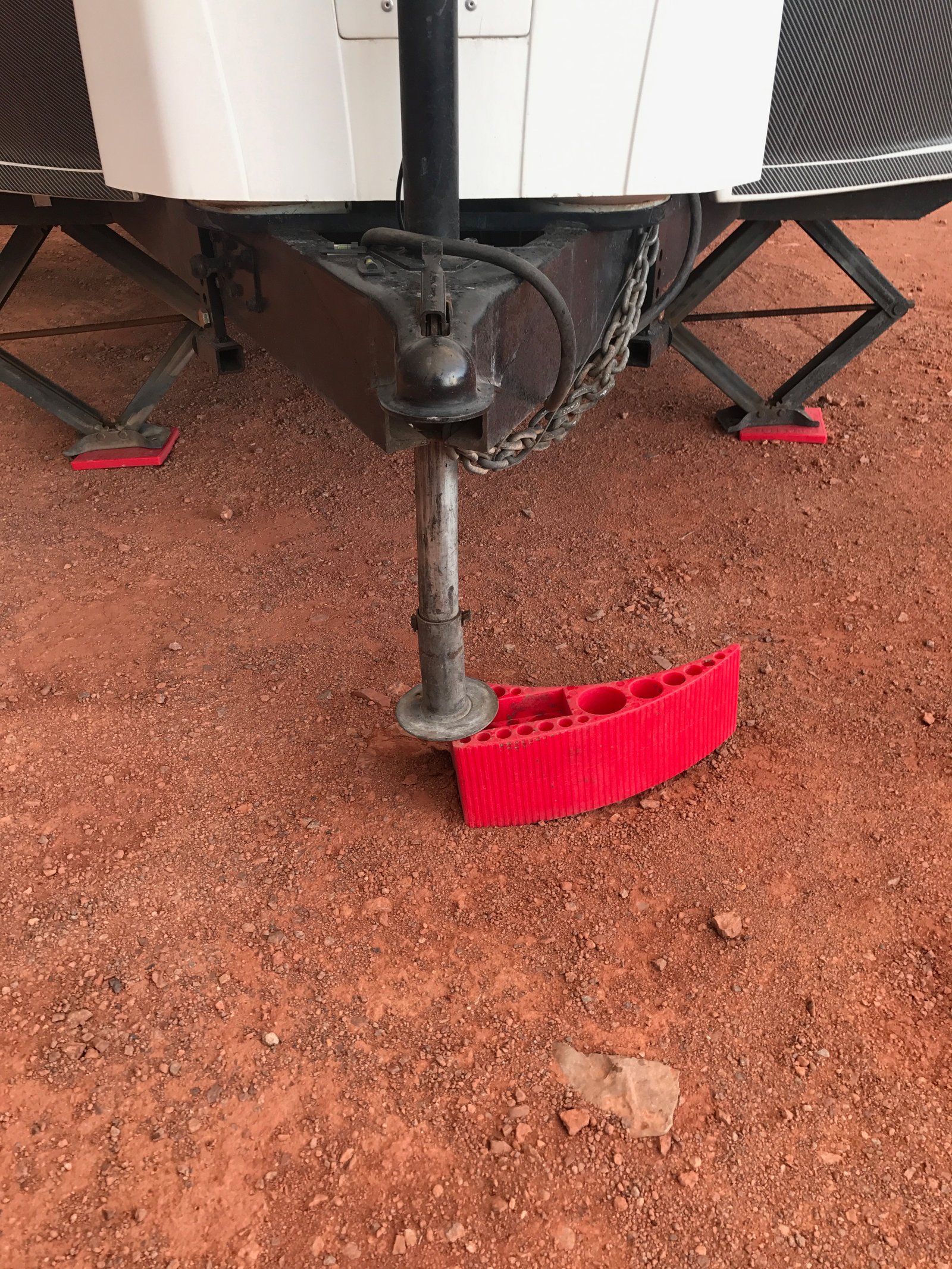
I knew when I got this trailer that it would meet my initial needs for adjusting to RV life while also keeping things sane for working from home. I’ve already started to notice how I use the space, and how I could, in time, get by with less. Right now I feel like you could chop the last 5 feet off my 30-foot trailer and I wouldn’t mind. I bet as time goes on, that number will increase. I could see a future where I’m happy with a very small fiberglass trailer, an Airstream, or even a 4×4 truck camper.
So what would you do differently?
Hindsight 20/20? I might have considered a small Class C RV while towing a small car behind it. But I’m not crying one bit over my choice.
